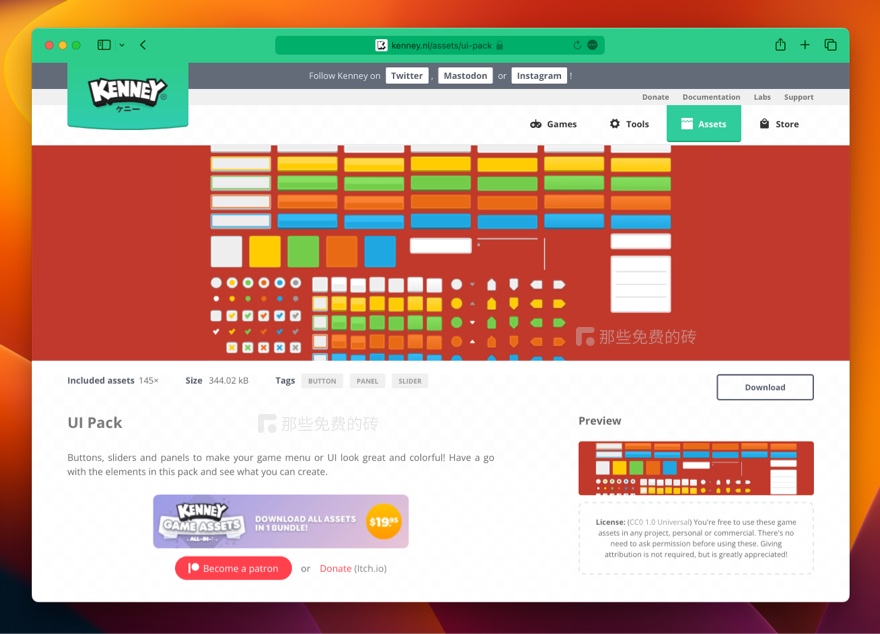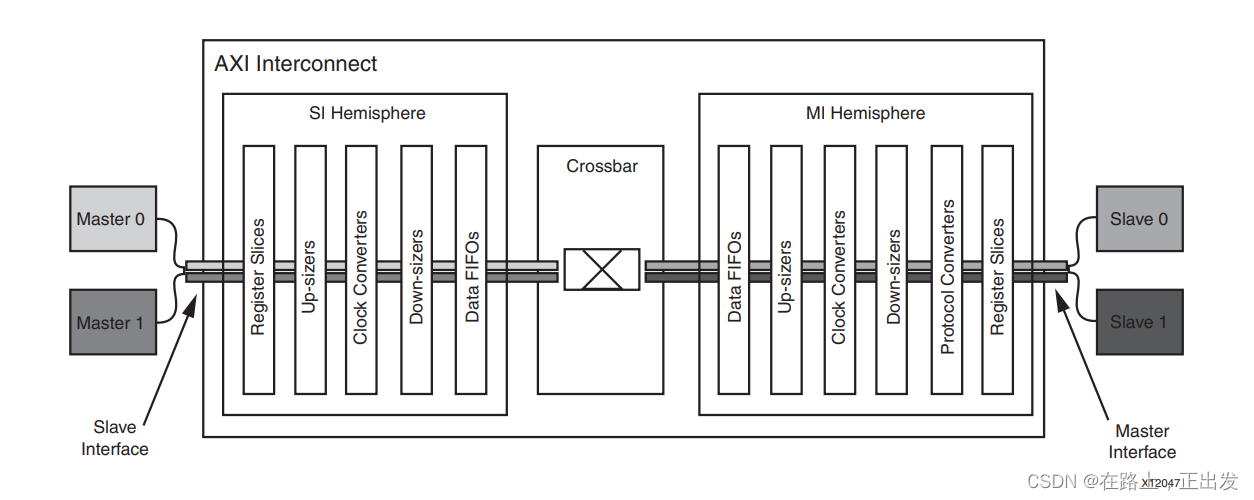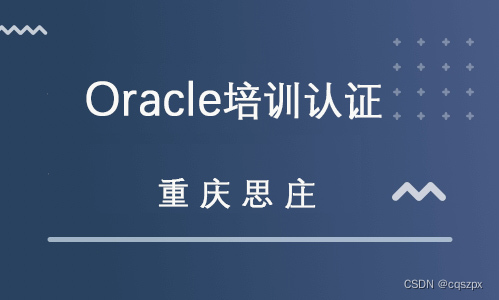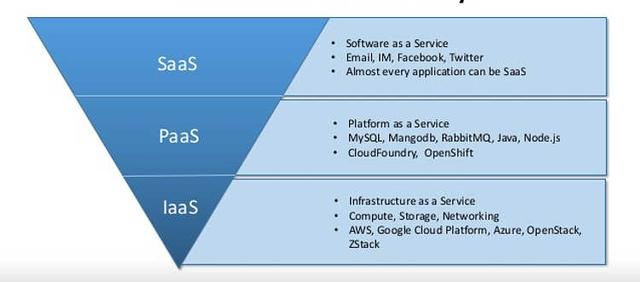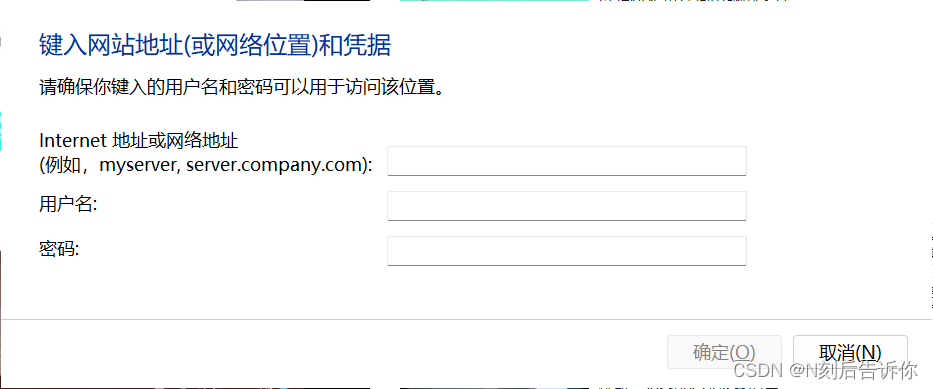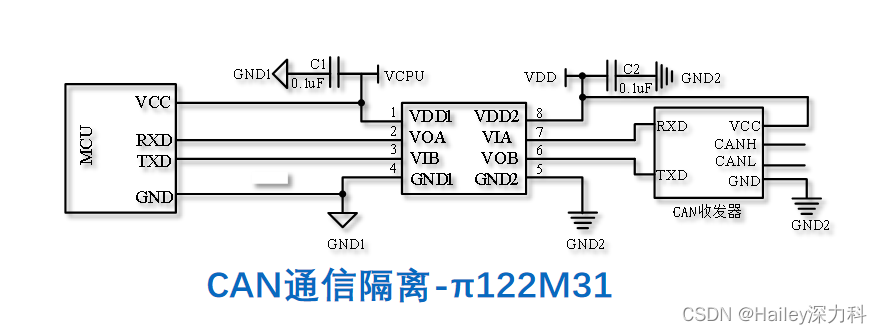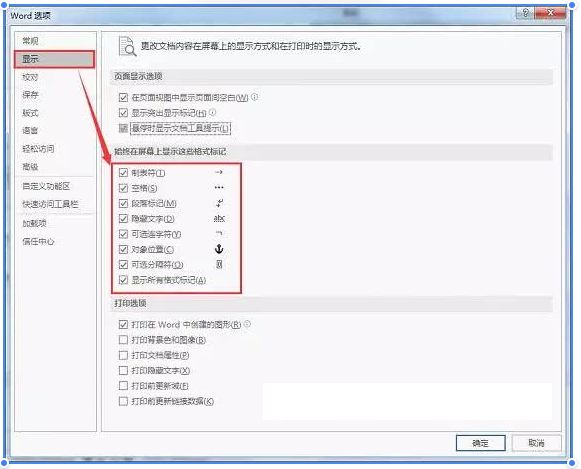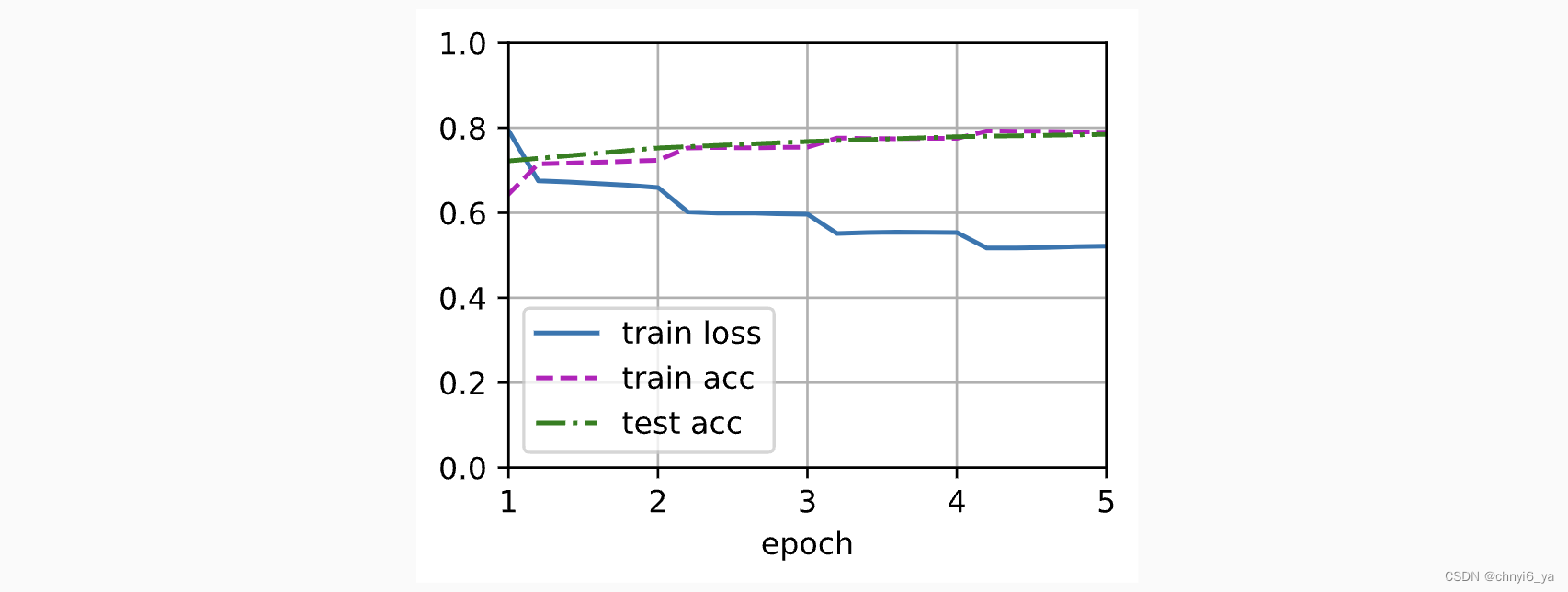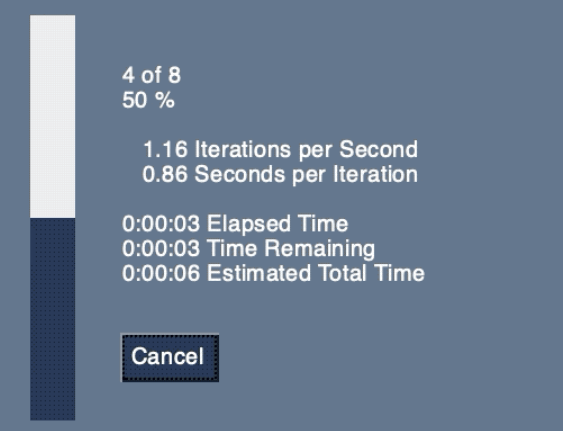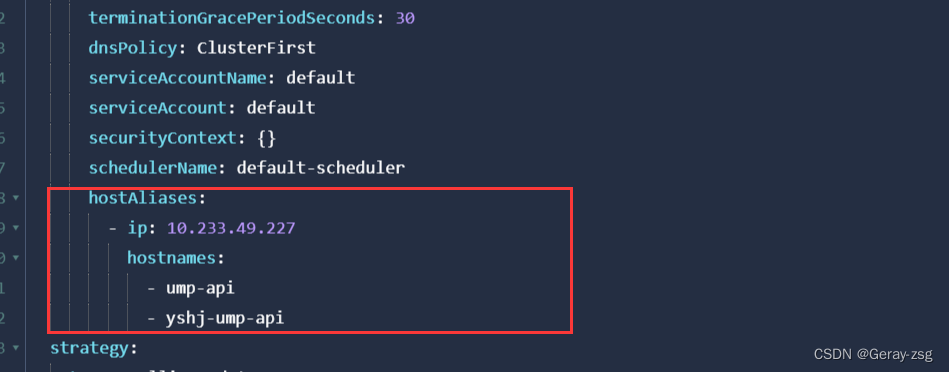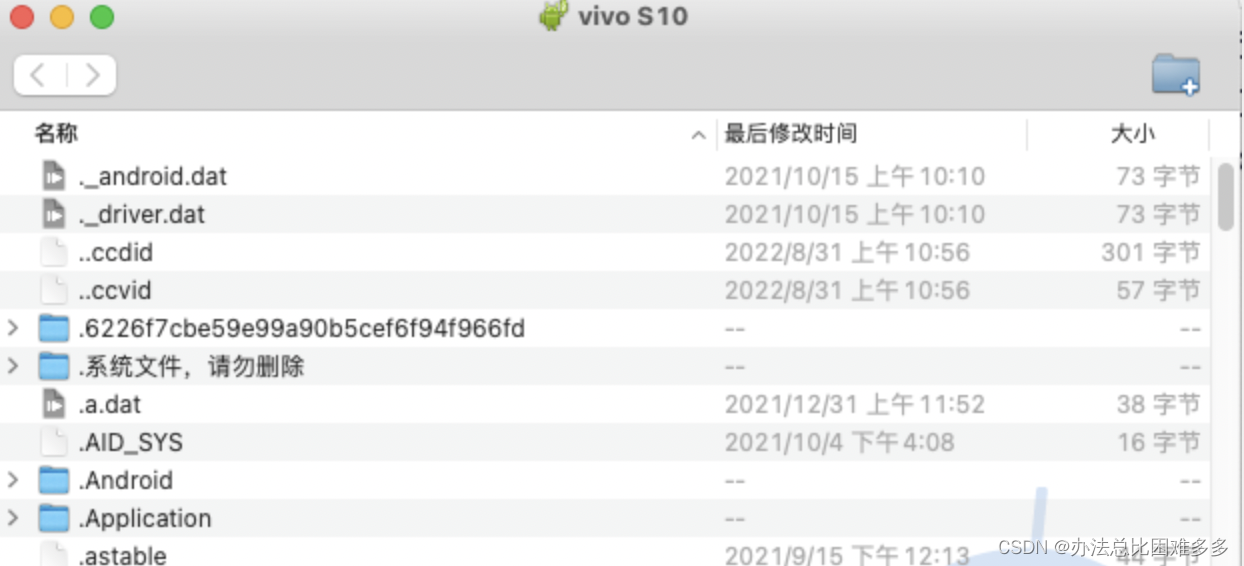Bastain Rieck: Topology-Based Graph Representation Learning
基础



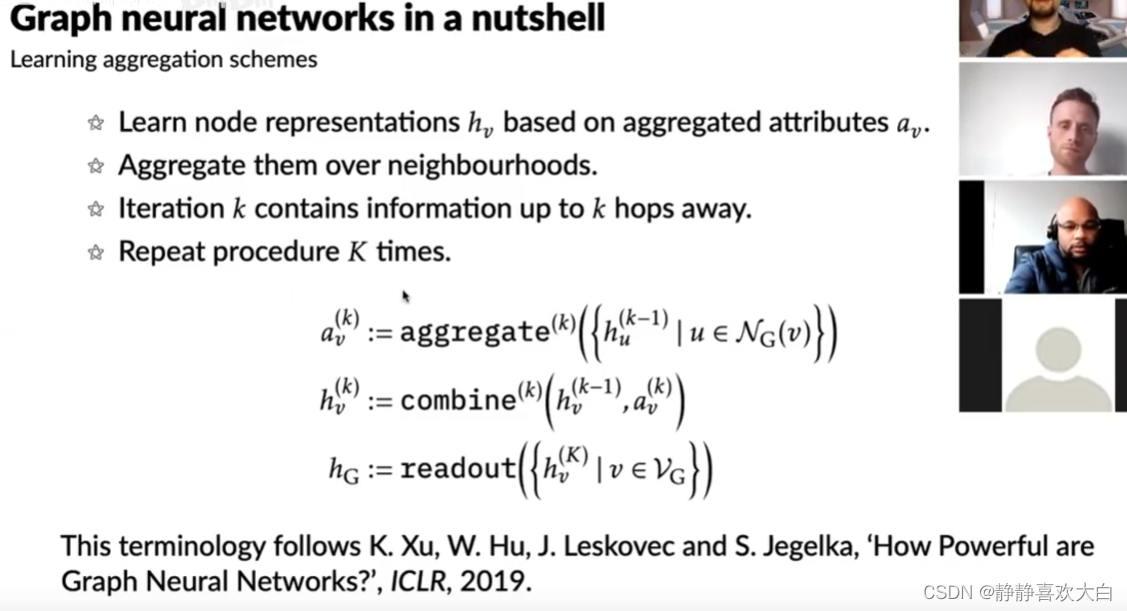
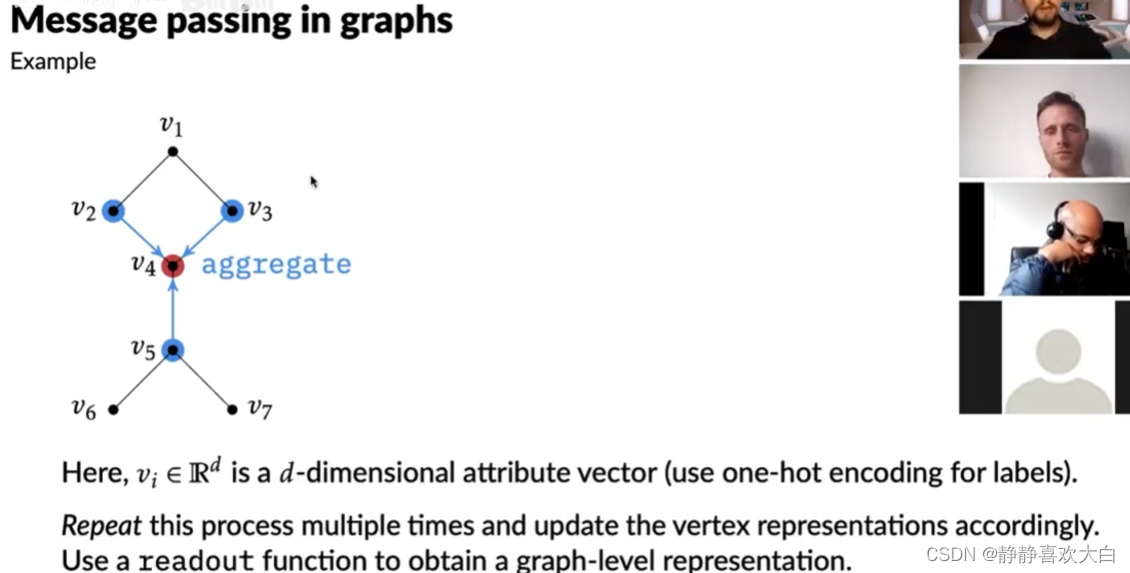
拓扑学习
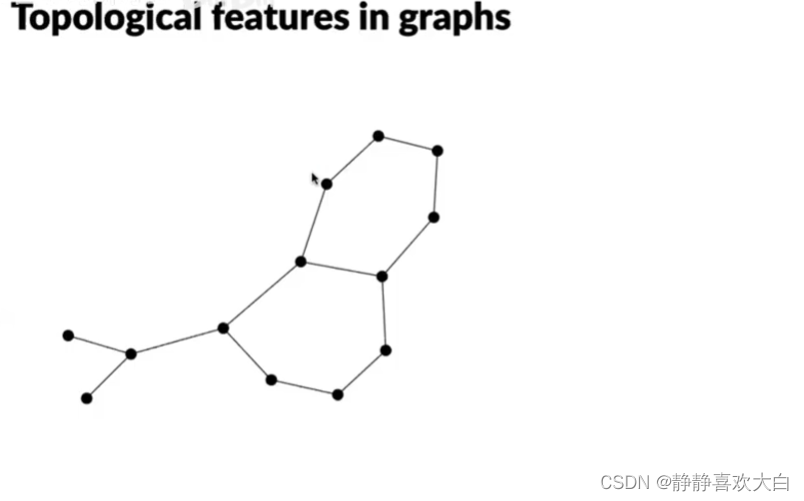



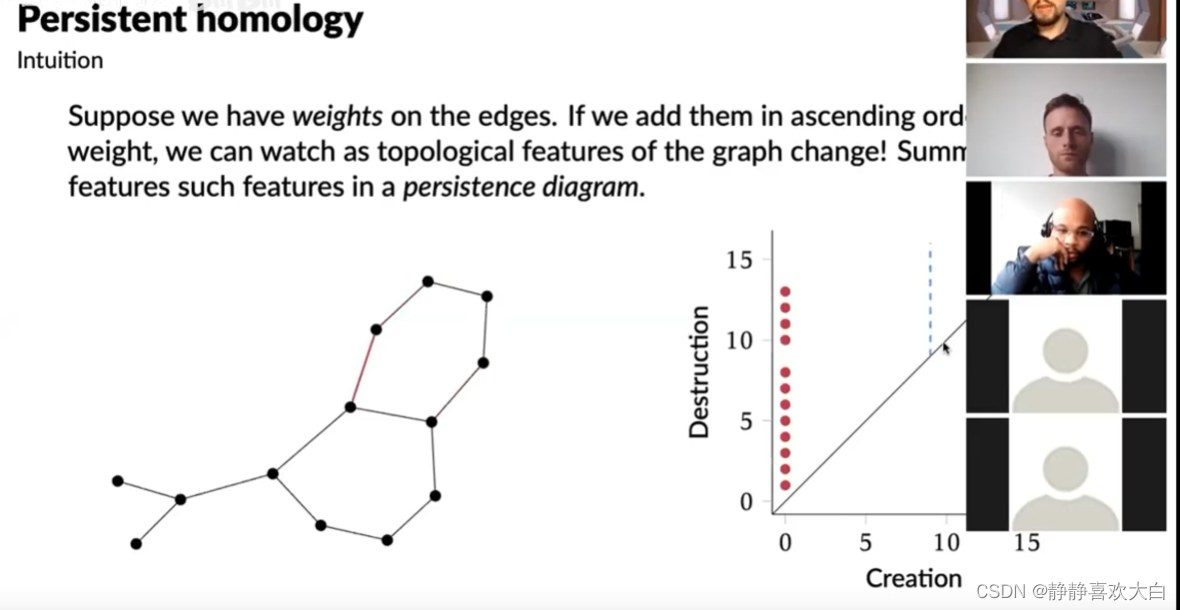
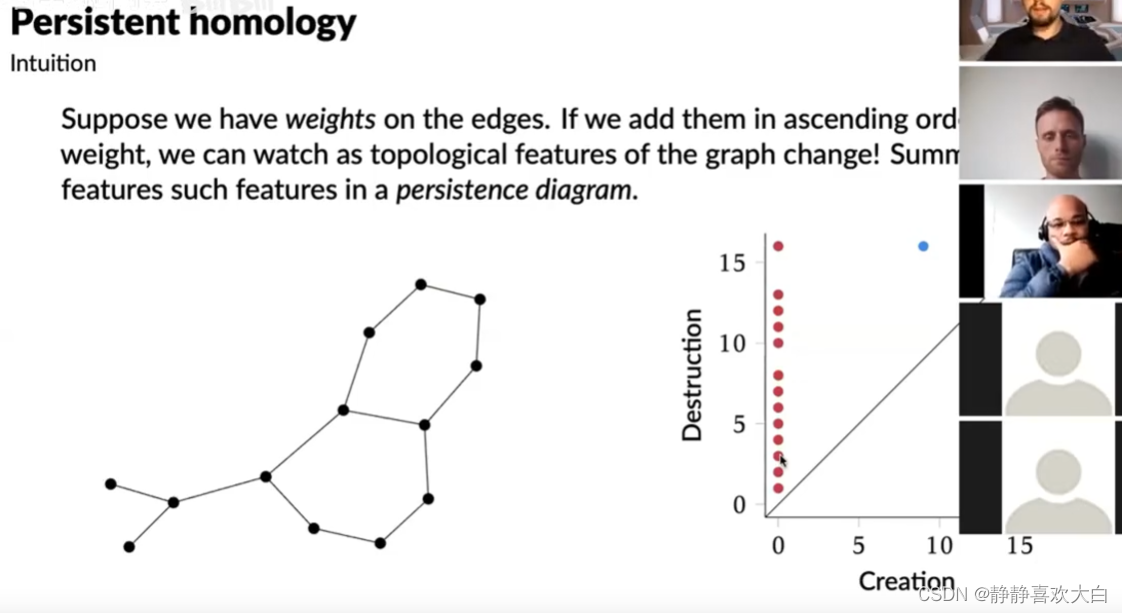



基于拓扑学习的工作
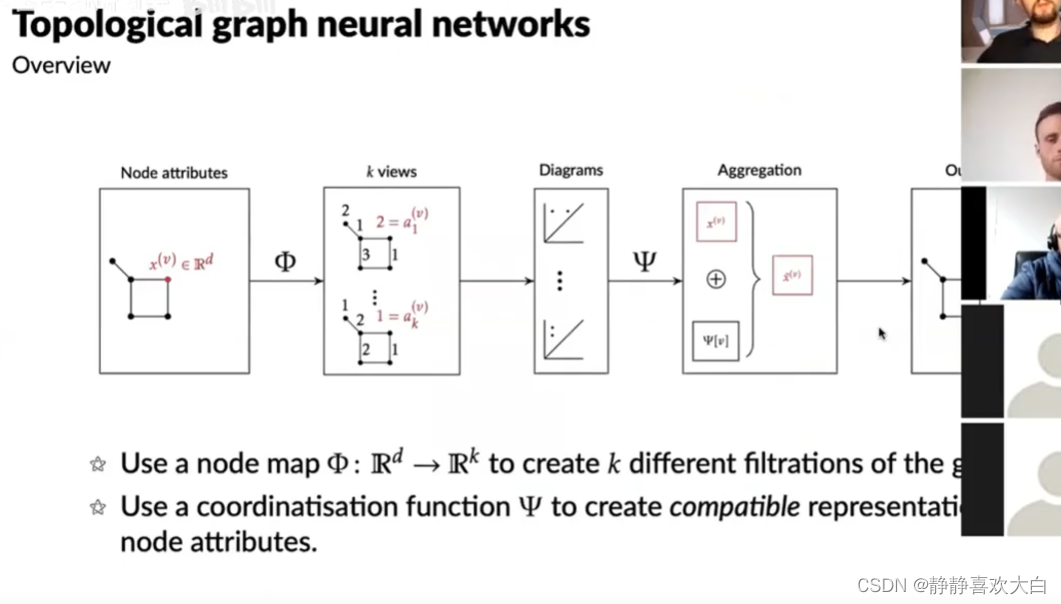


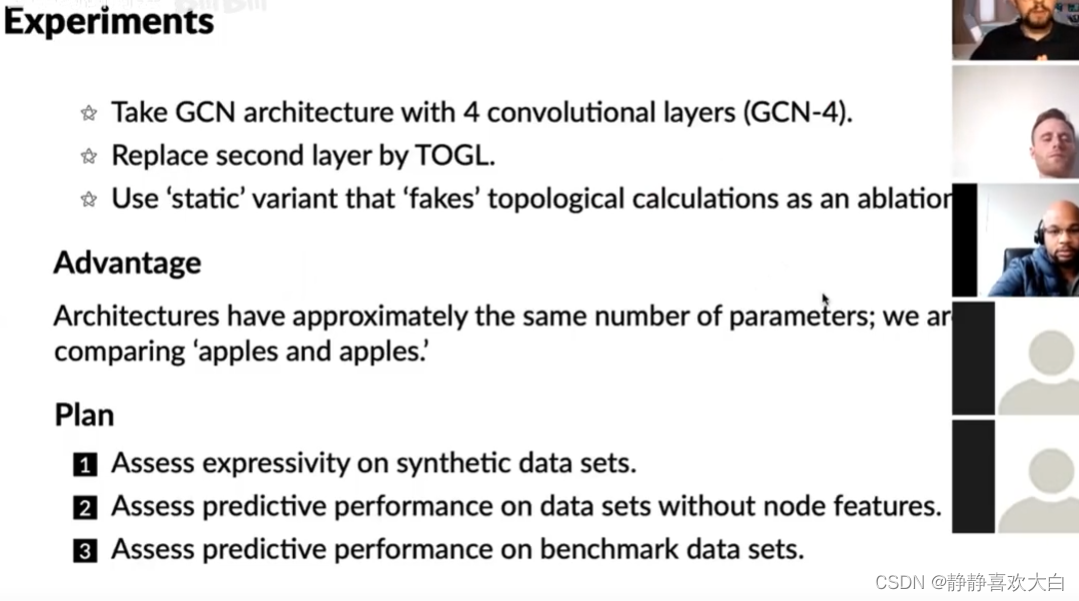
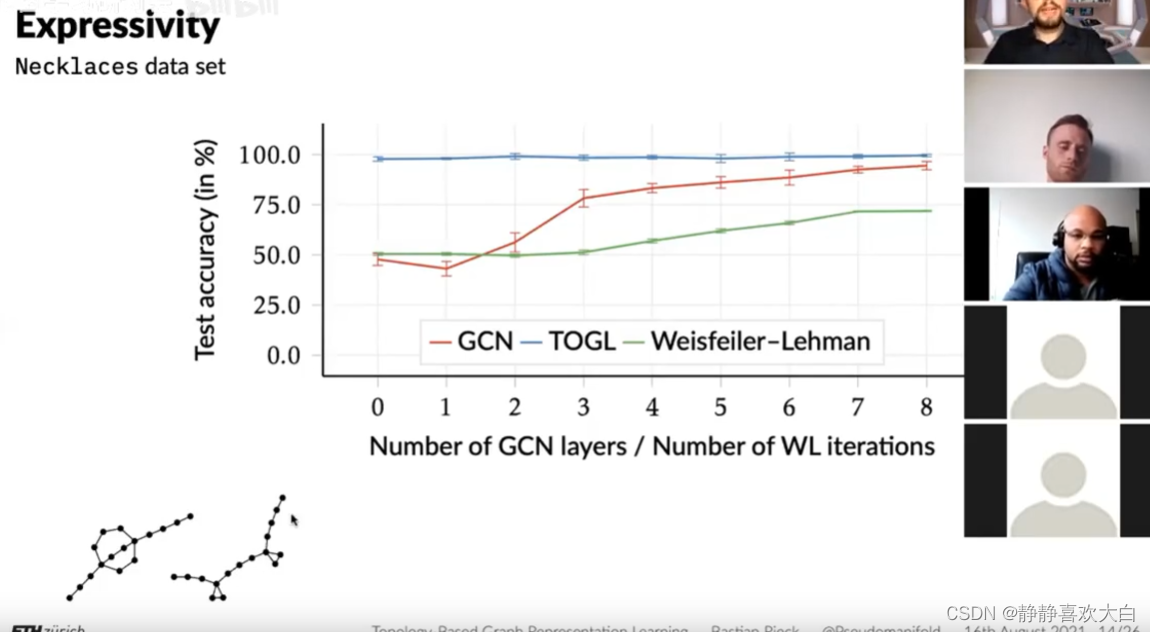


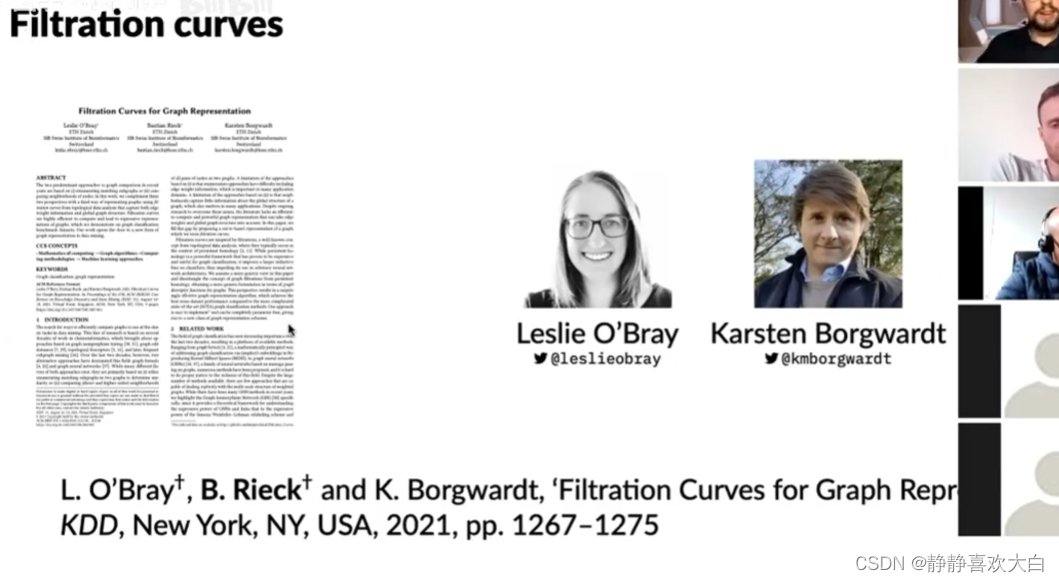




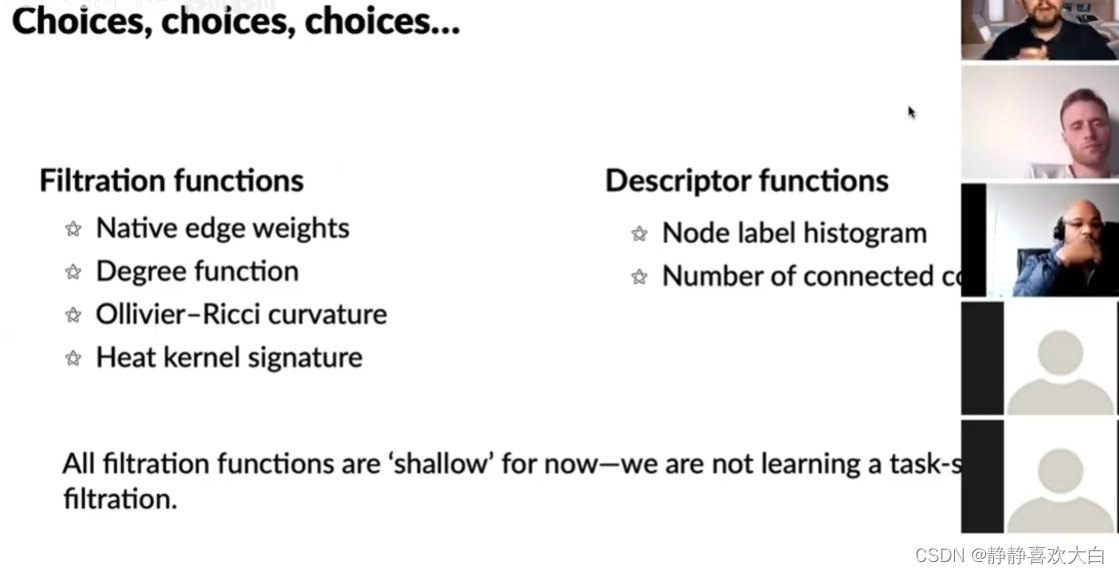



参考
Bastain Rieck: Topology-Based Graph Representation Learning_哔哩哔哩_bilibili
Chaitanya K. Joshi Graph Neural Networks for Geometric Graphs
背景




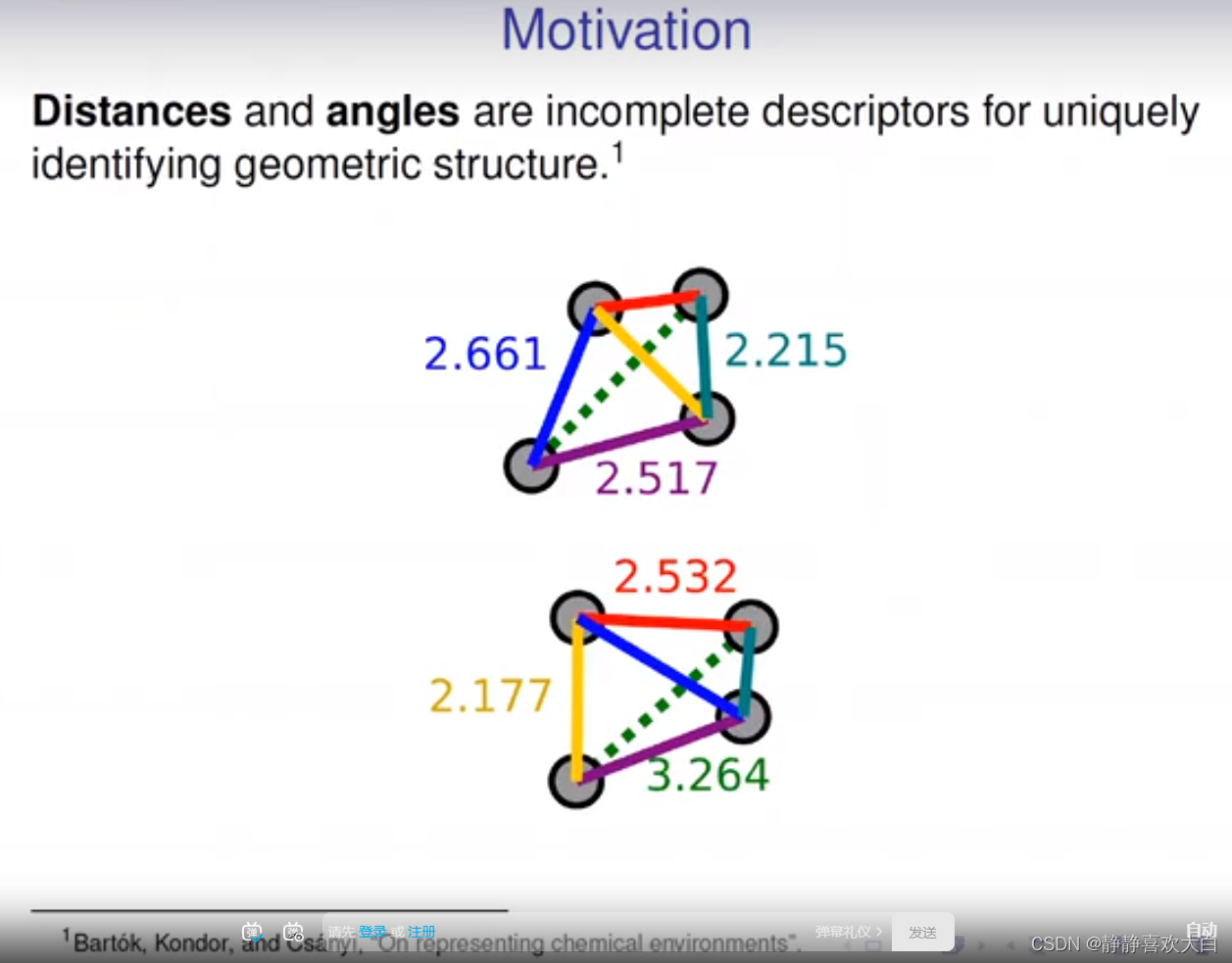
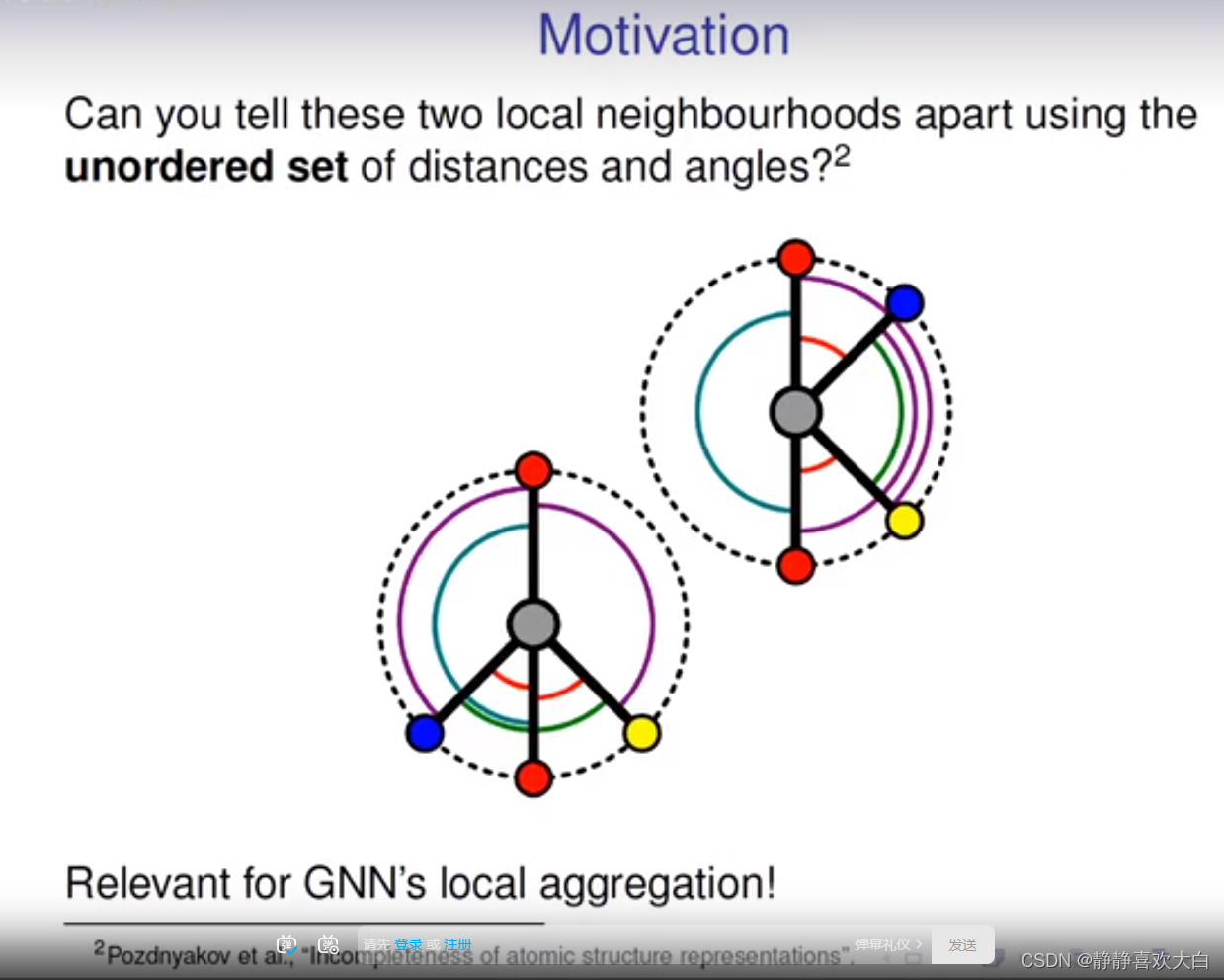


方法

Geometric Graphs
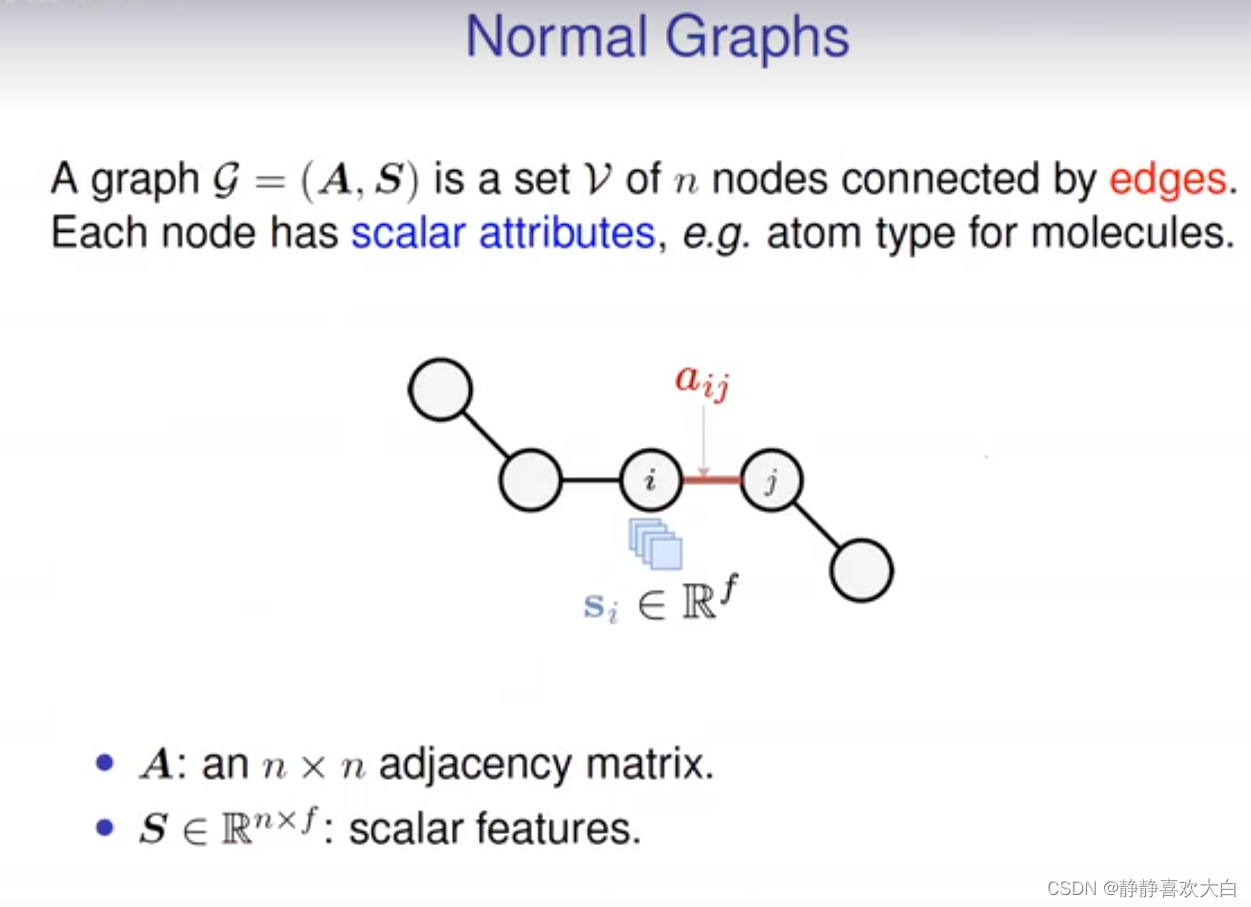

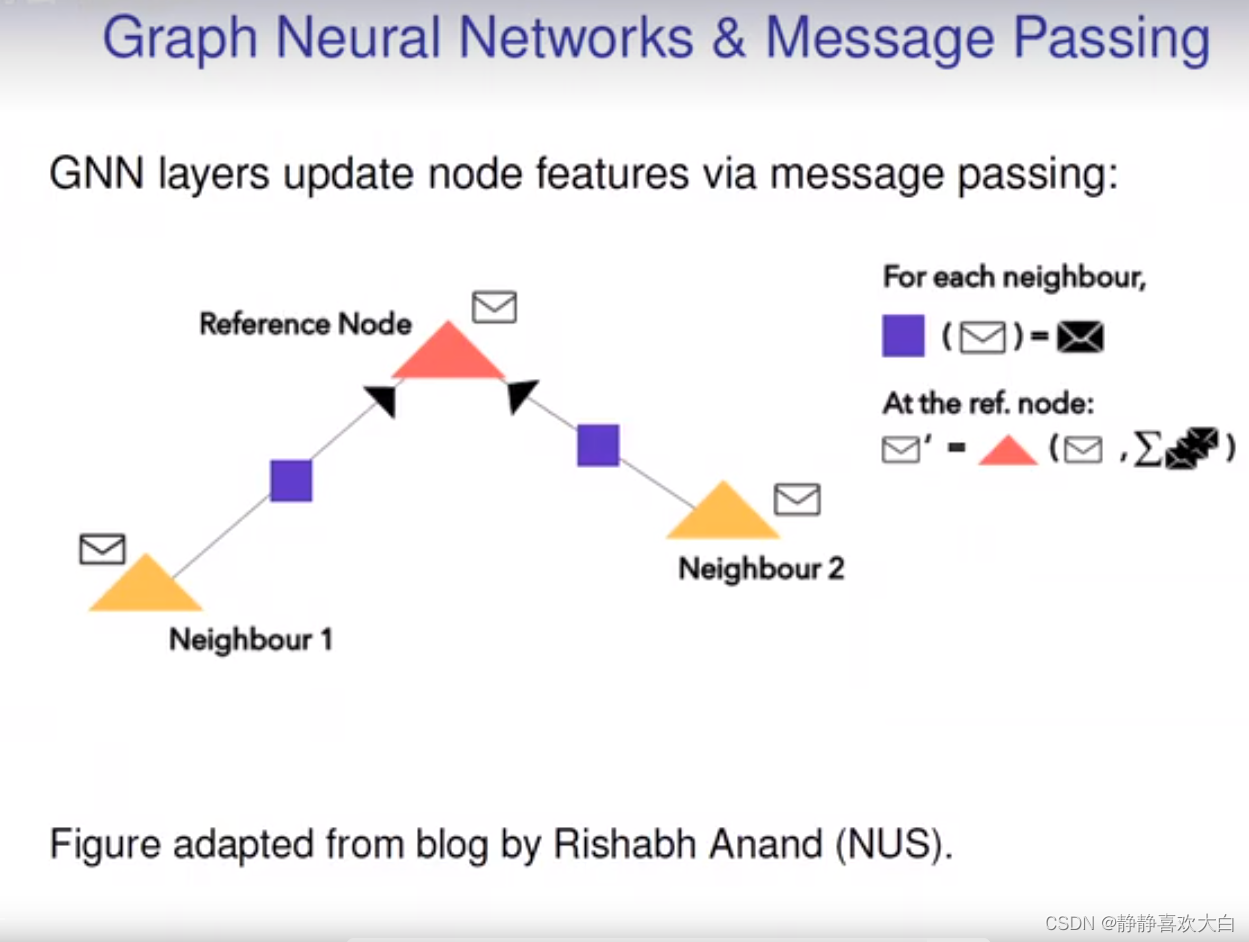
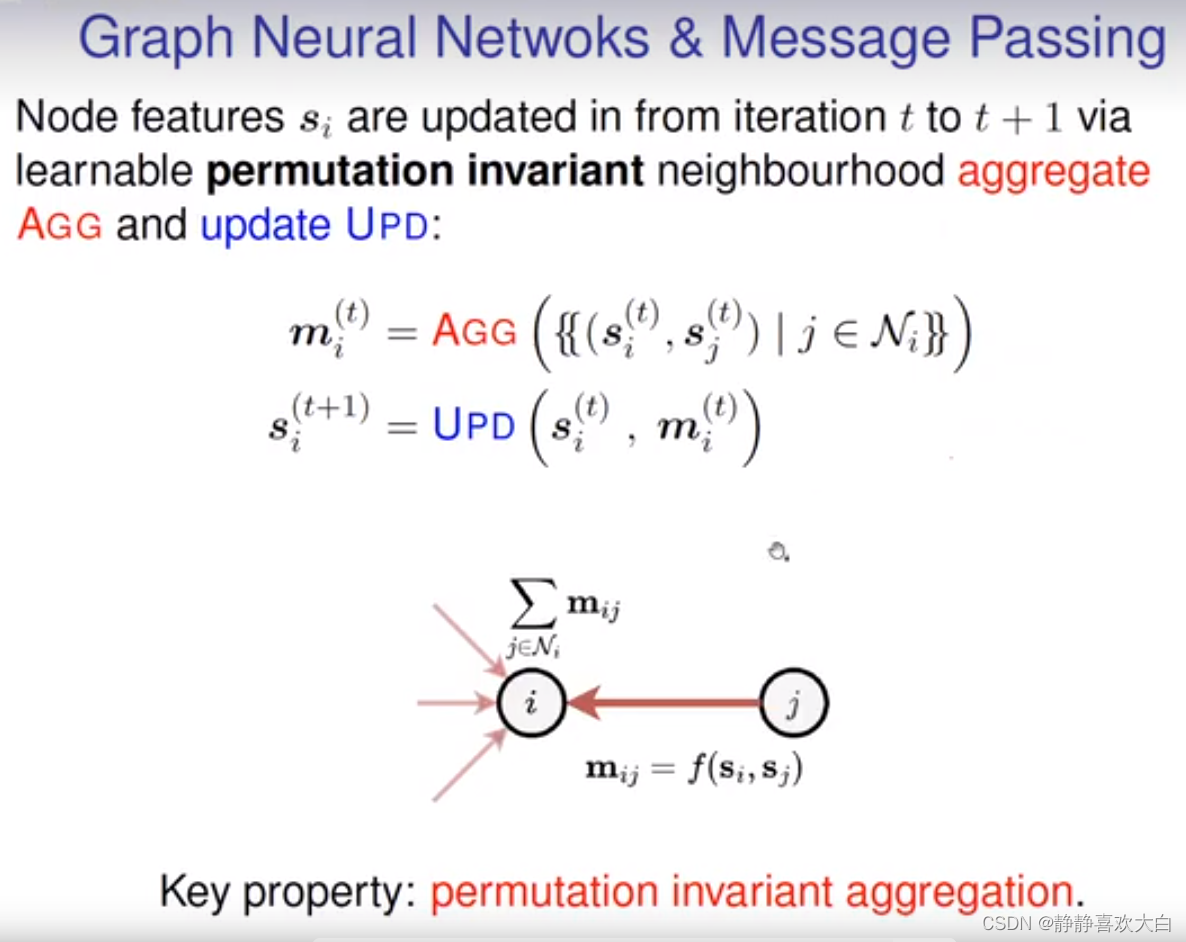


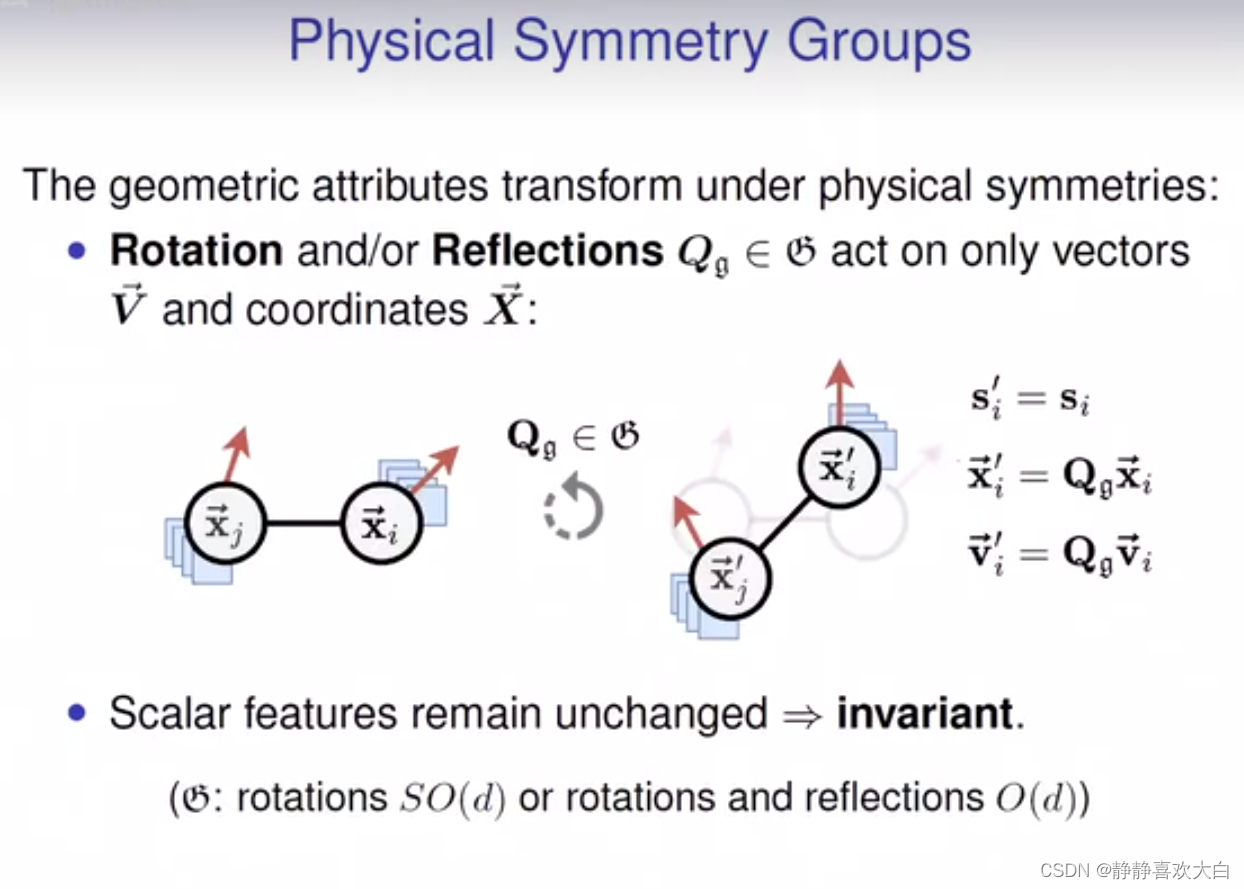




GNNs for Geometric Graphs

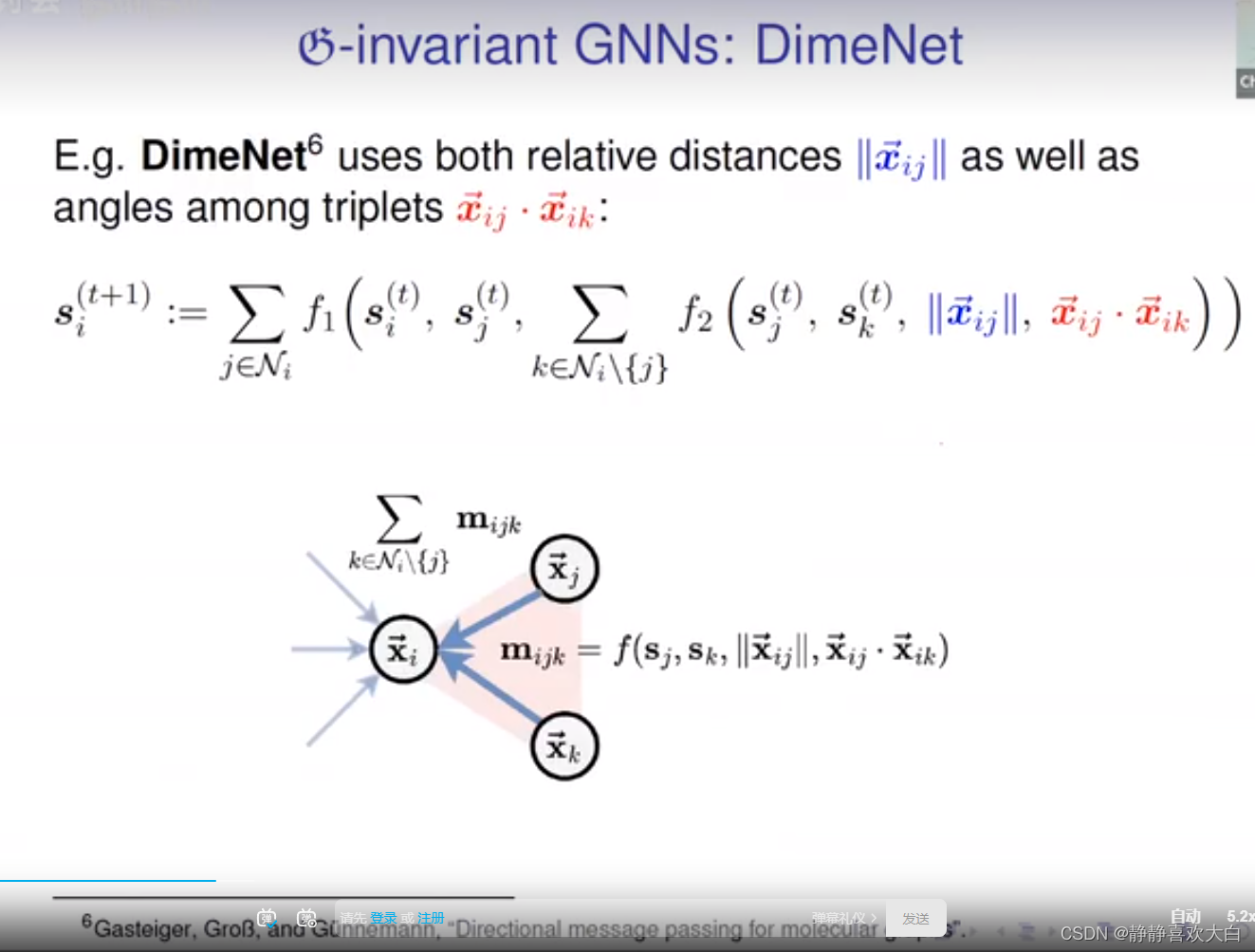




Universality and Discrimination




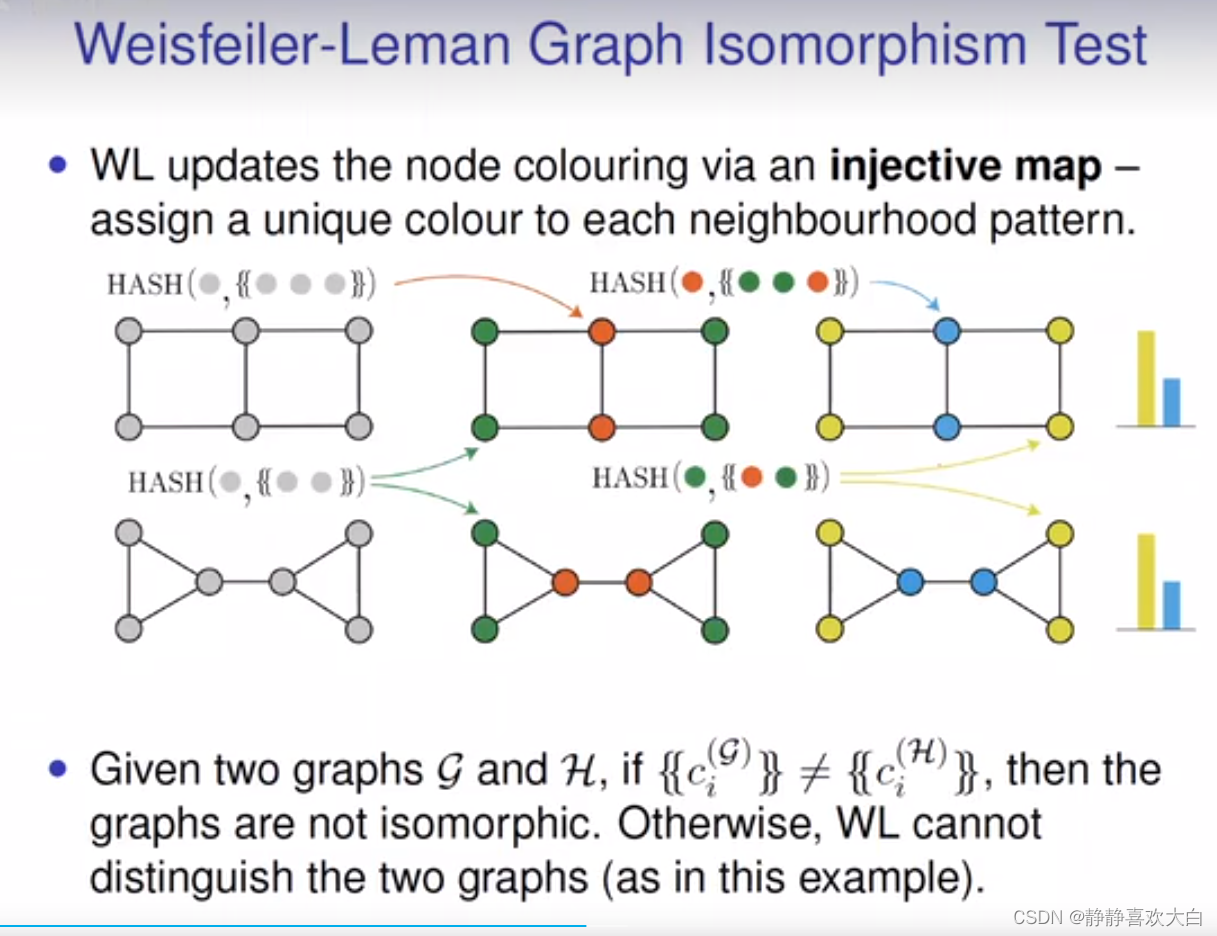


Geometric Weisfeiler-Leman Test






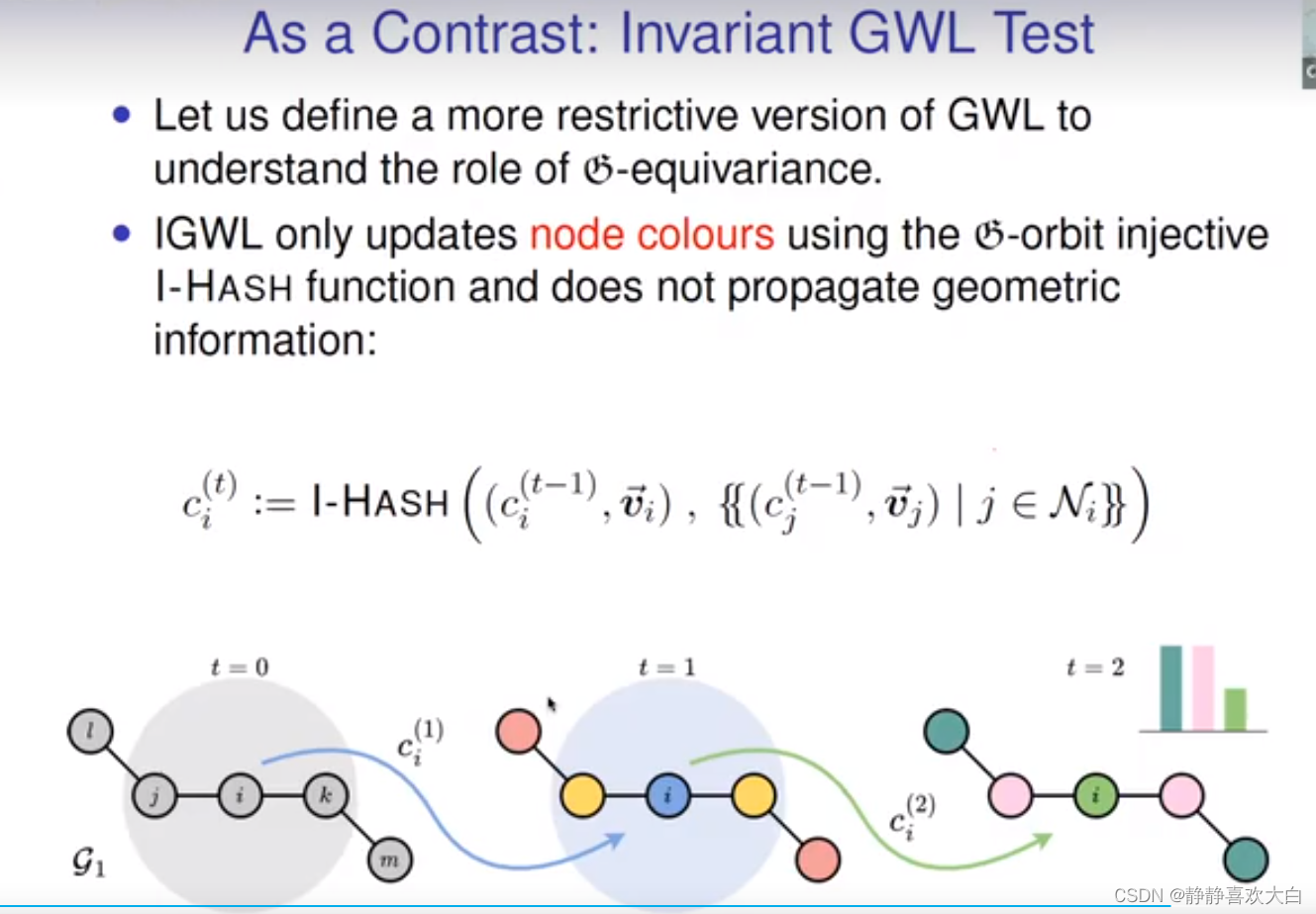

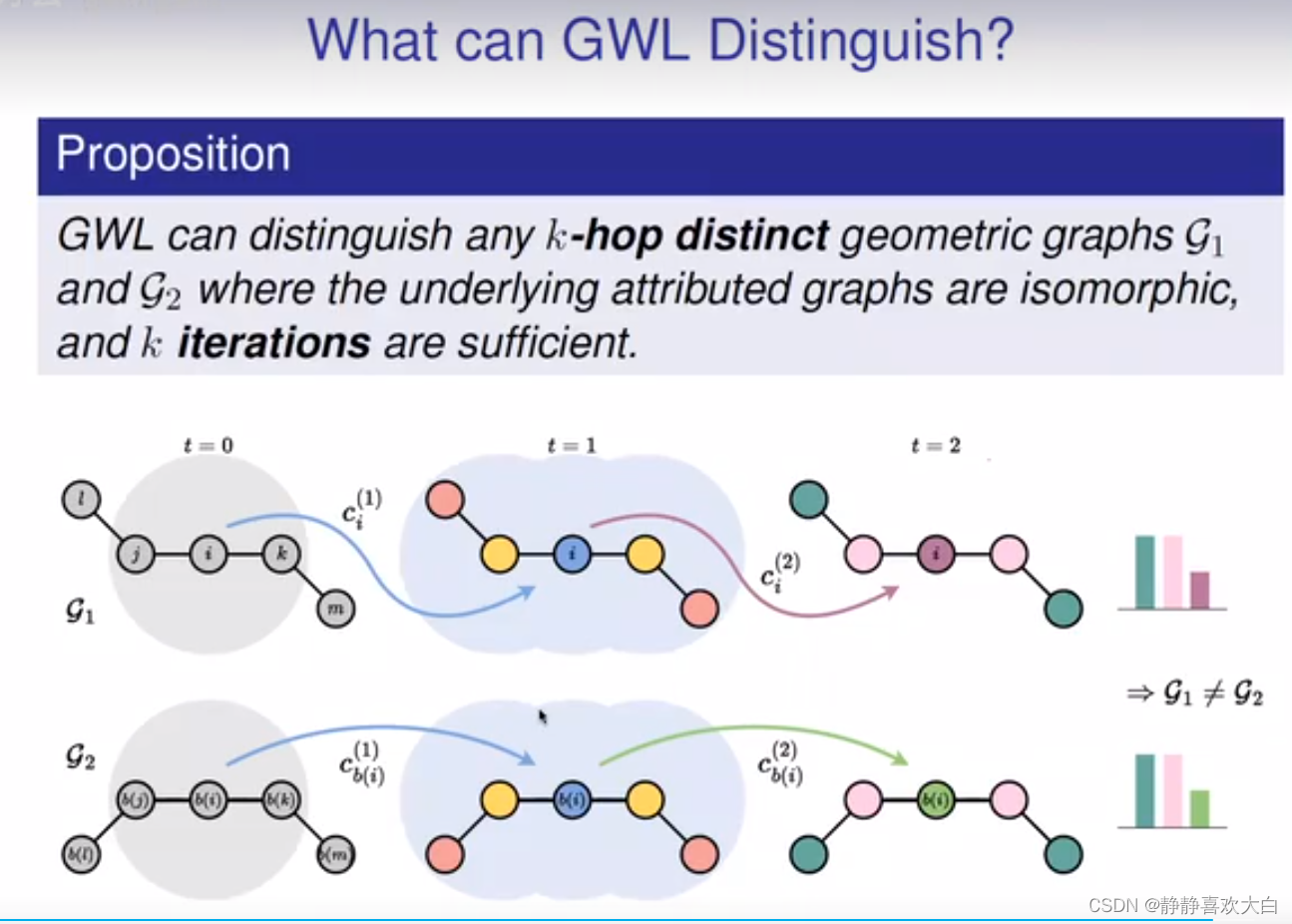





可借鉴:
1)报告中的参考文献引用形式
2)画图配色
参考
Graph Neural Networks for Geometric Graphs - Chaitanya K. Joshi, Simon V. Mathis_哔哩哔哩_bilibili
Pinterest吴凌飞: 图深度学习与自然语言处理
摘要
There are a rich variety of NLP problems that can be best expressed with graph structures. Due to the great power in modeling non-Euclidean data like graphs, deep learning on graphs techniques (i.e., Graph Neural Networks (GNNs)) have opened a new door to solving challenging graph-related NLP problems and have already achieved great success. Despite the success, deep learning on graphs for NLP (DLG4NLP) still faces many challenges (e.g., automatic graph construction, graph representation learning for complex graphs, and learning mapping between complex data structures). This tutorial will cover relevant and interesting topics on applying deep learning on graph techniques to NLP, including automatic graph construction for NLP, graph representation learning for NLP, advanced GNN-based models (e.g., graph2seq and graph2tree) for NLP, and the applications of GNNs in various NLP tasks (e.g., machine translation, natural language generation, information extraction and semantic parsing). In addition, hands-on demonstration sessions will be included to help the audience gain practical experience in applying GNNs to solve challenging NLP problems using our recently developed open source library – Graph4NLP, the first library for researchers and practitioners for easy use of GNNs for various NLP tasks.
嘉宾简介
吴凌飞博士,美国公立常春藤之称的威廉玛丽学院计算机科学博士学位。他的主要研究方向是机器学习,表征学习,和自然语言处理的有机结合,特别是图神经网络及其应用。目前他是美国Pinterest公司的主管知识图谱和内容理解的研发工程经理(EM)。在这之前,他是京东硅谷研究中心的首席科学家,带领了30 多名机器学习/自然语言处理科学家和软件工程师组成的团队,构建智能电子商务个性化系统。他目前著有图神经网络图书一本,并发表了100多篇顶级会议和期刊的论文,谷歌学术引用将近3000次(H-index 28, I10-index 68)。他主持开发的Graph4NLP软件包,自2021年中发布以来收获1500+ Stars,180+ Forks,深受学术界和工业界欢迎。他曾是 IBM Thomas J. Watson 研究中心的高级研究员,并领导10 多名研究科学家团队开发前沿的图神经网络方法和系统,三次获得IBM杰出技术贡献奖。他是 40 多项美国专利的共同发明人,凭借其专利的高商业价值,共获得八项IBM发明成果奖,并被任命为 IBM 2020 级发明大师。他目前担任IEEE TNNSL和ACM Transactions on Knowledge Discovery from Data的副主编,定期担任主要的 AI/ML/NLP 会议包括 KDD,EMNLP, IJCAI,AAAI等的SPC/AC。个人主页:https://sites.google.com/a/email.wm.edu/teddy-lfwu/
背景

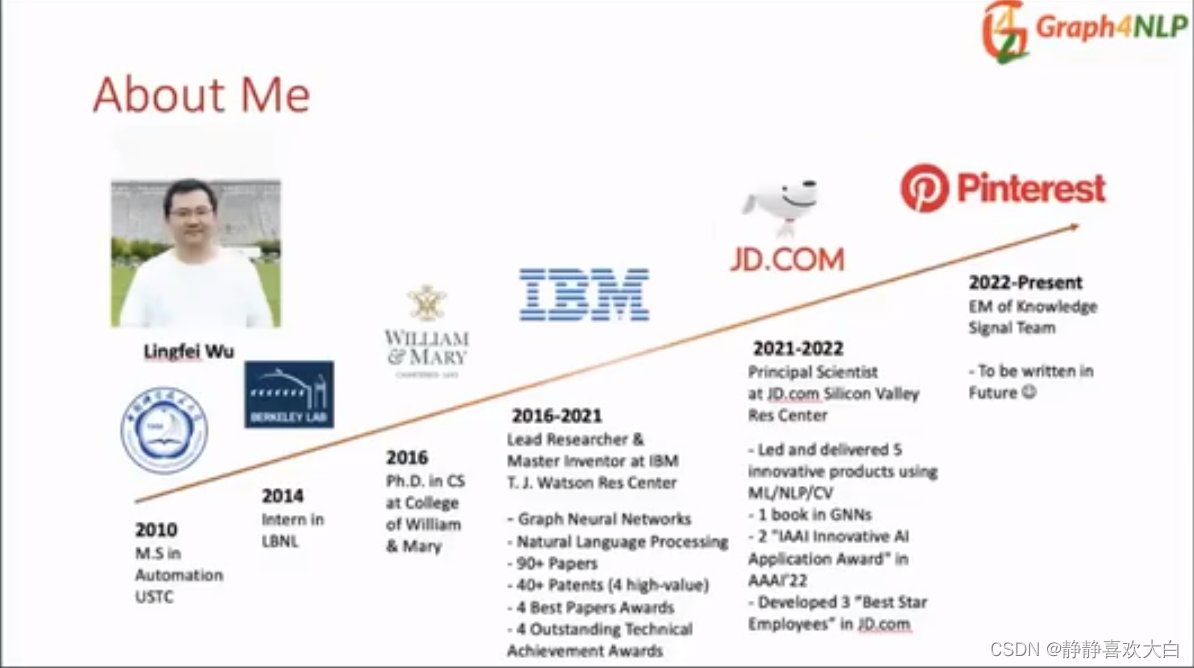


方法
基础
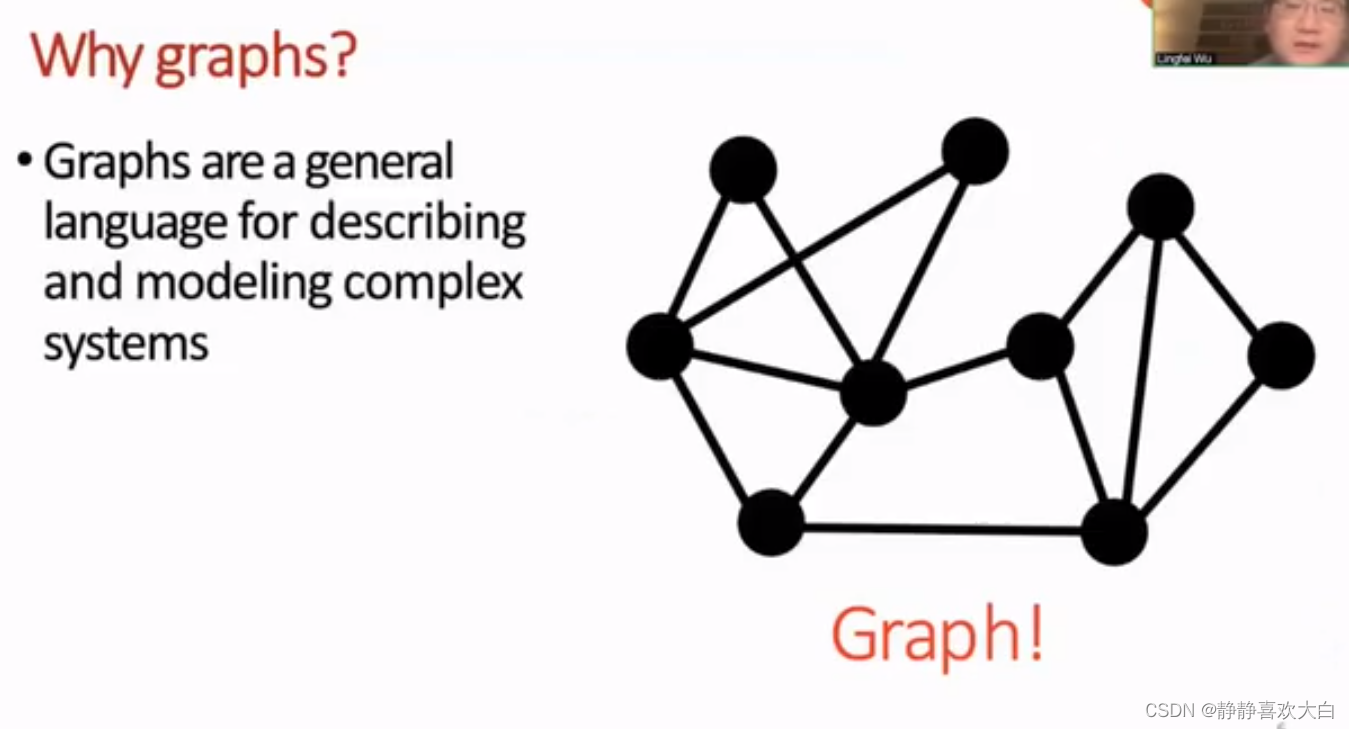








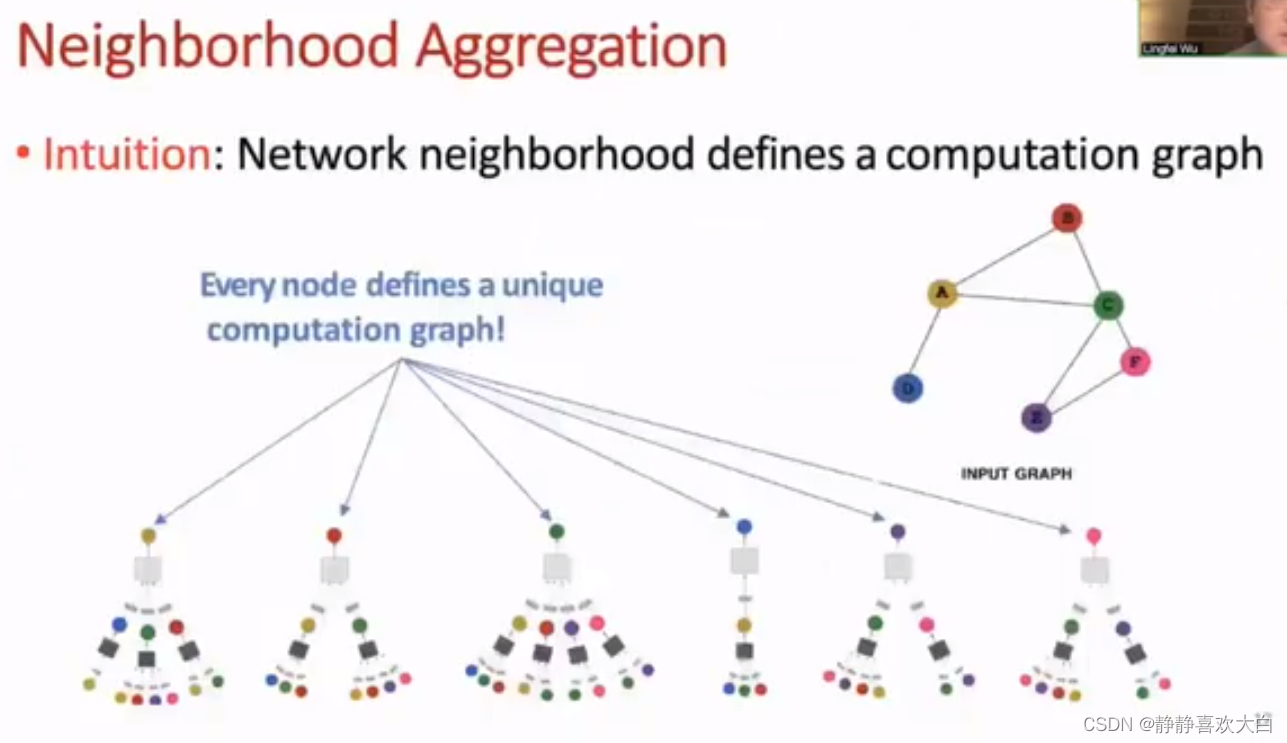
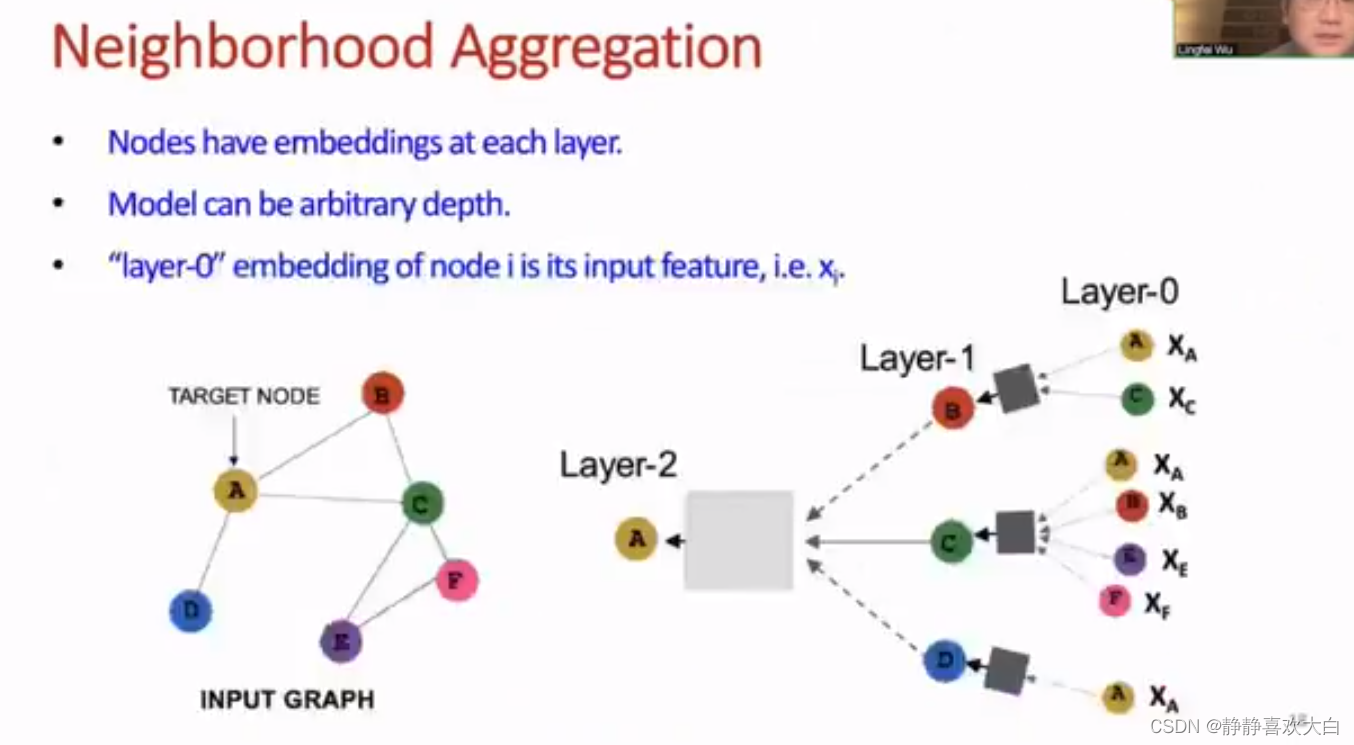








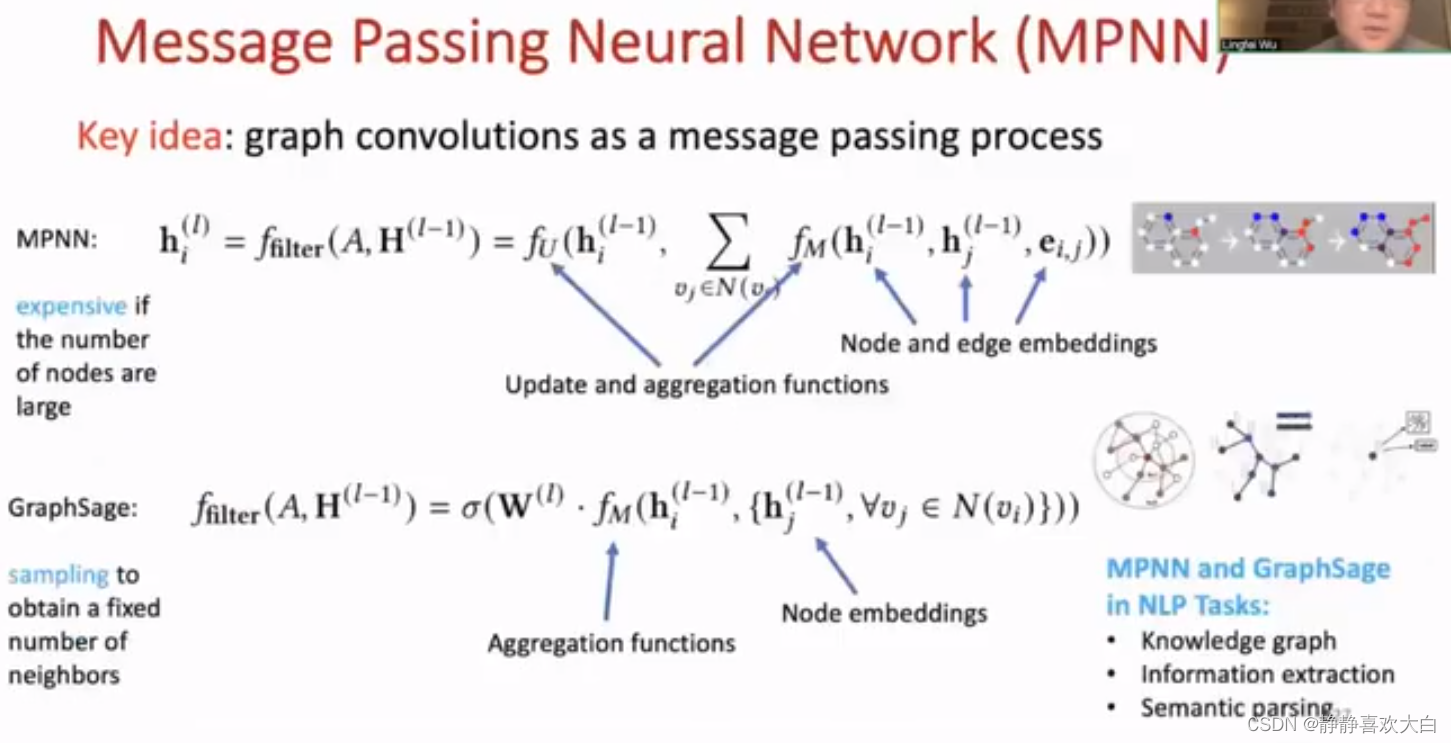

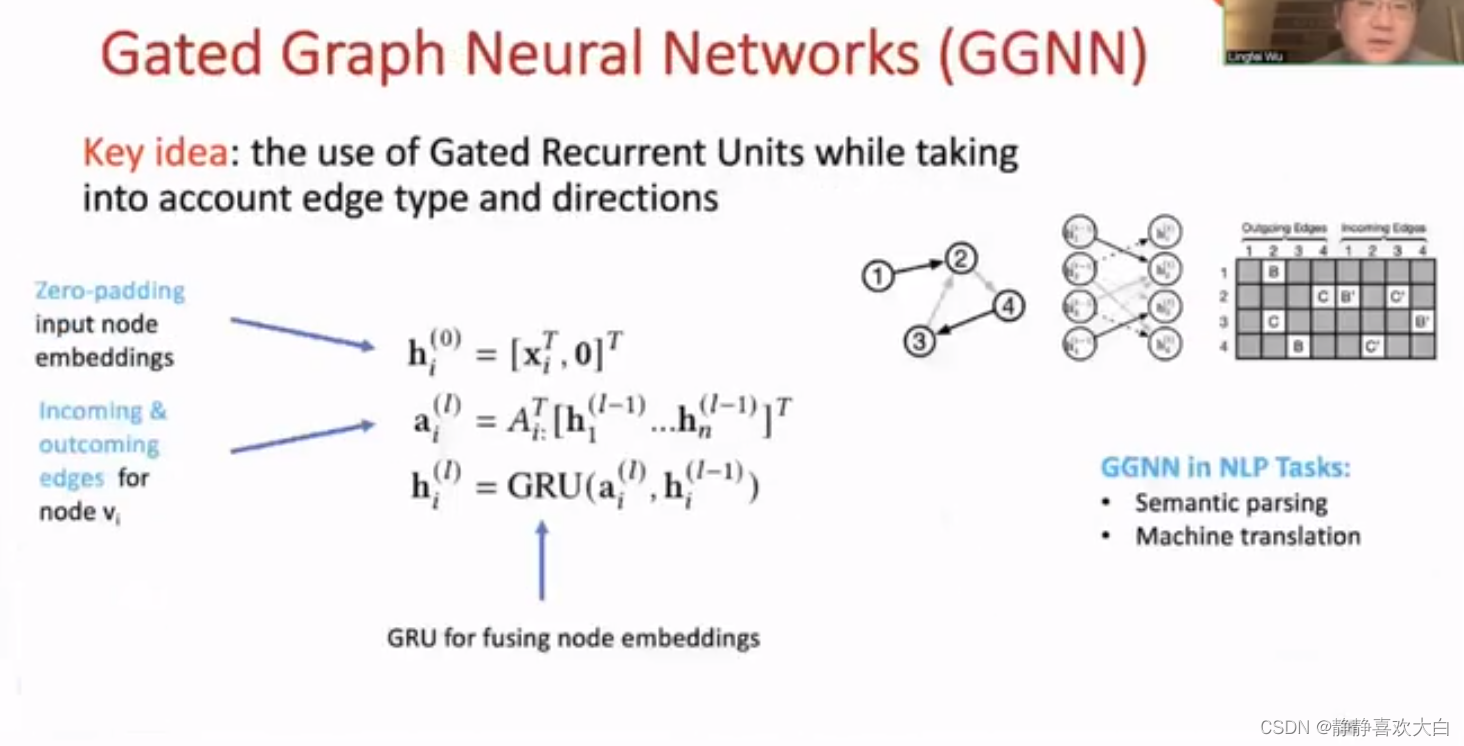
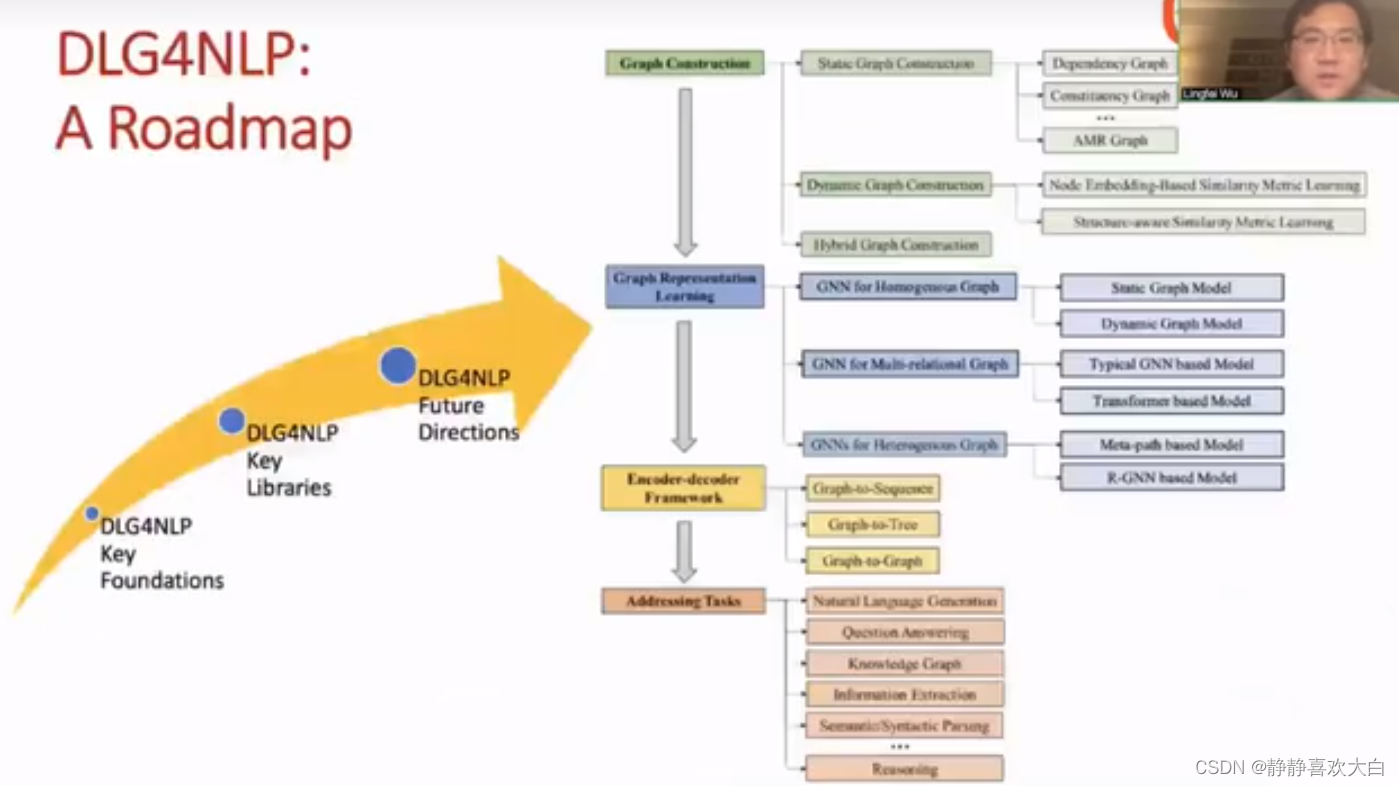
GNN4NLP




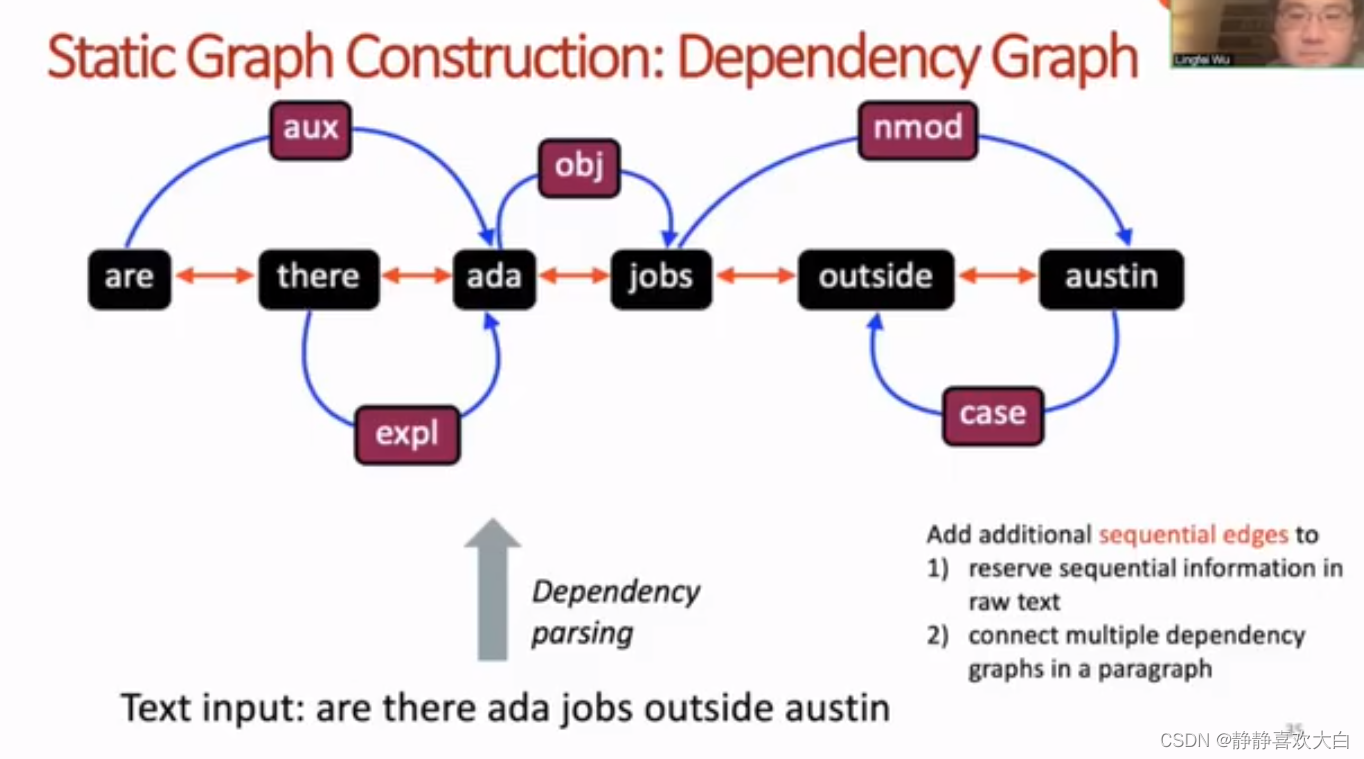


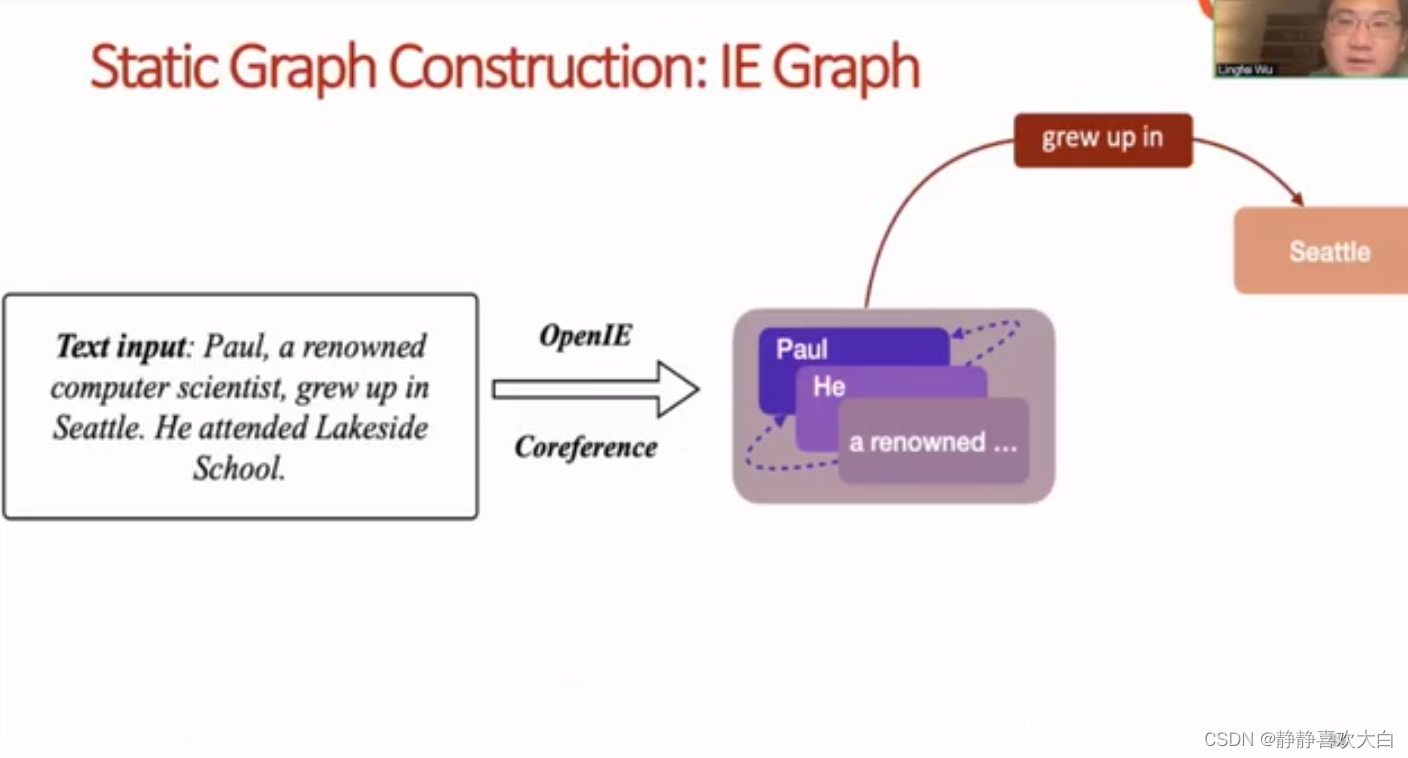


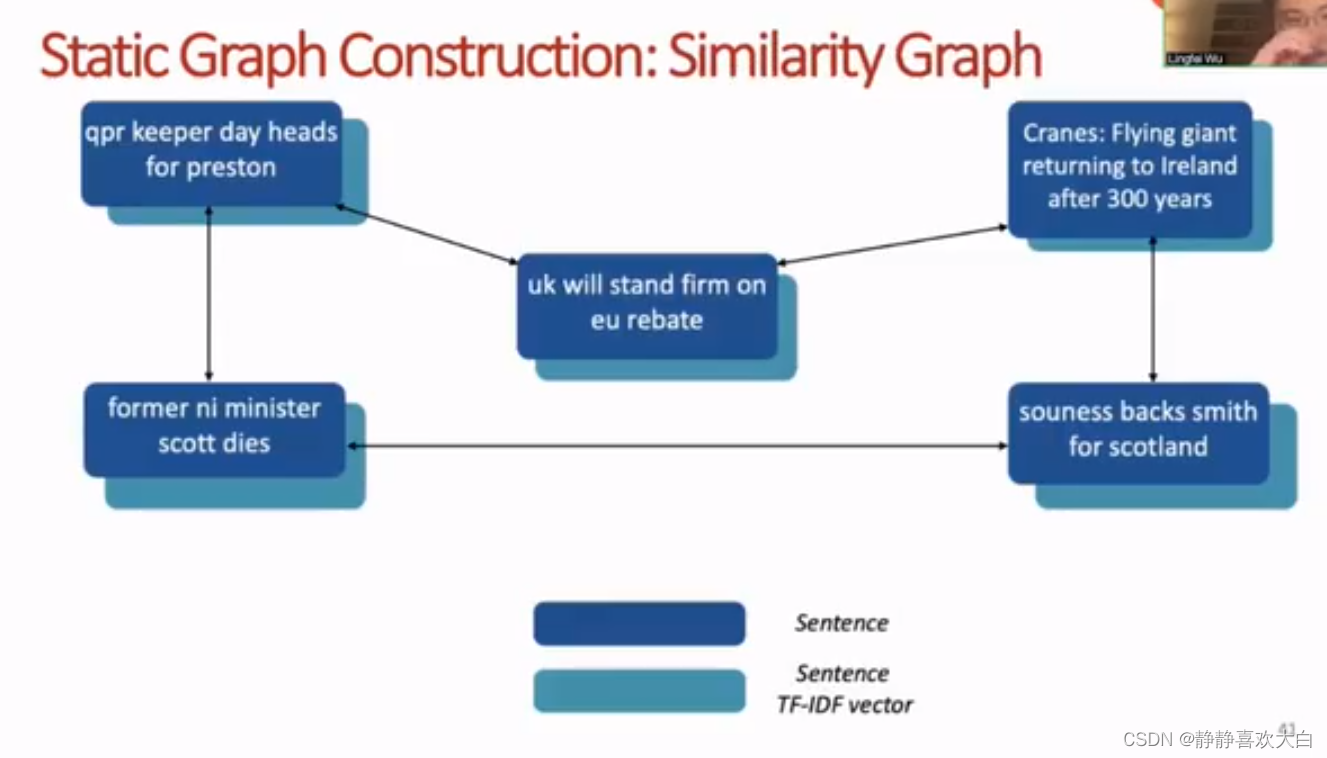











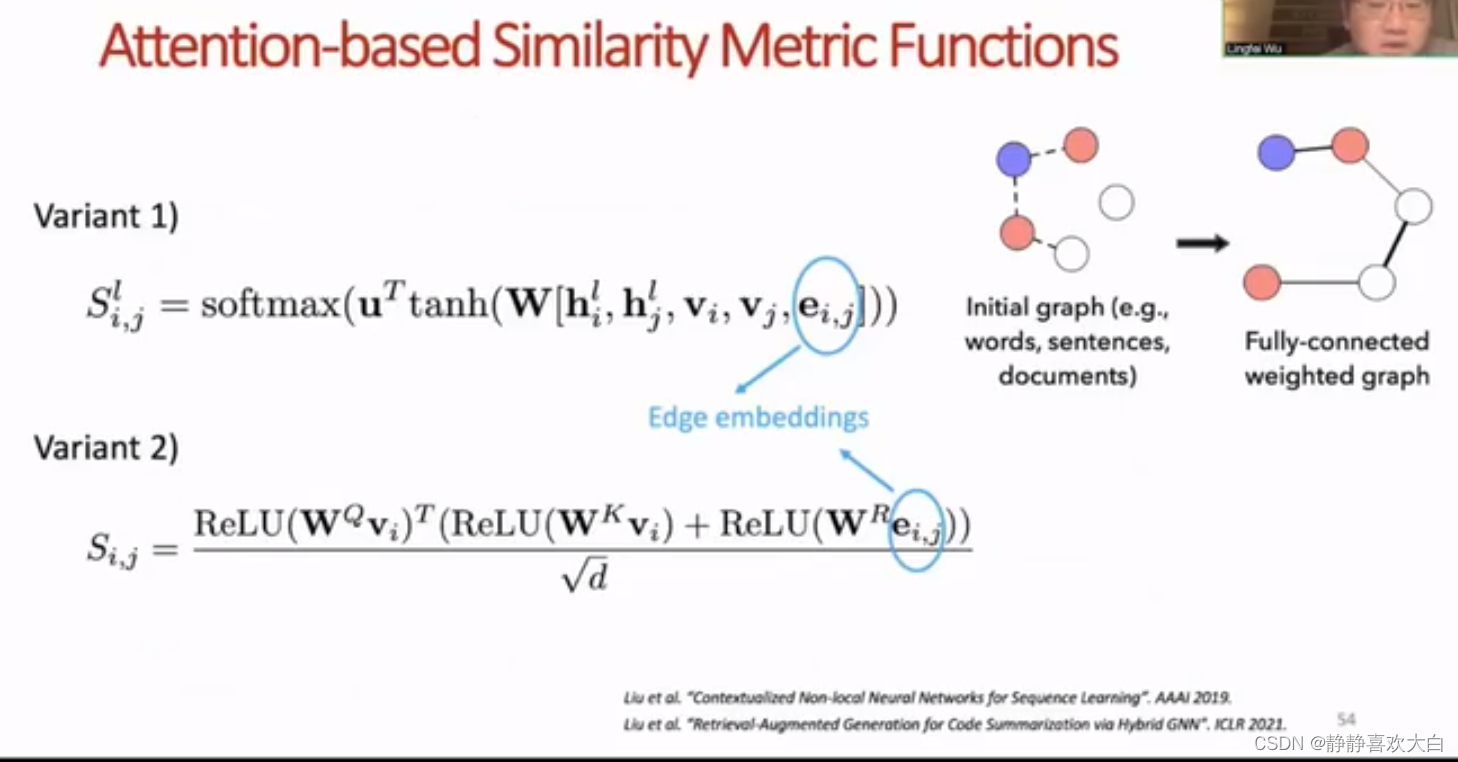



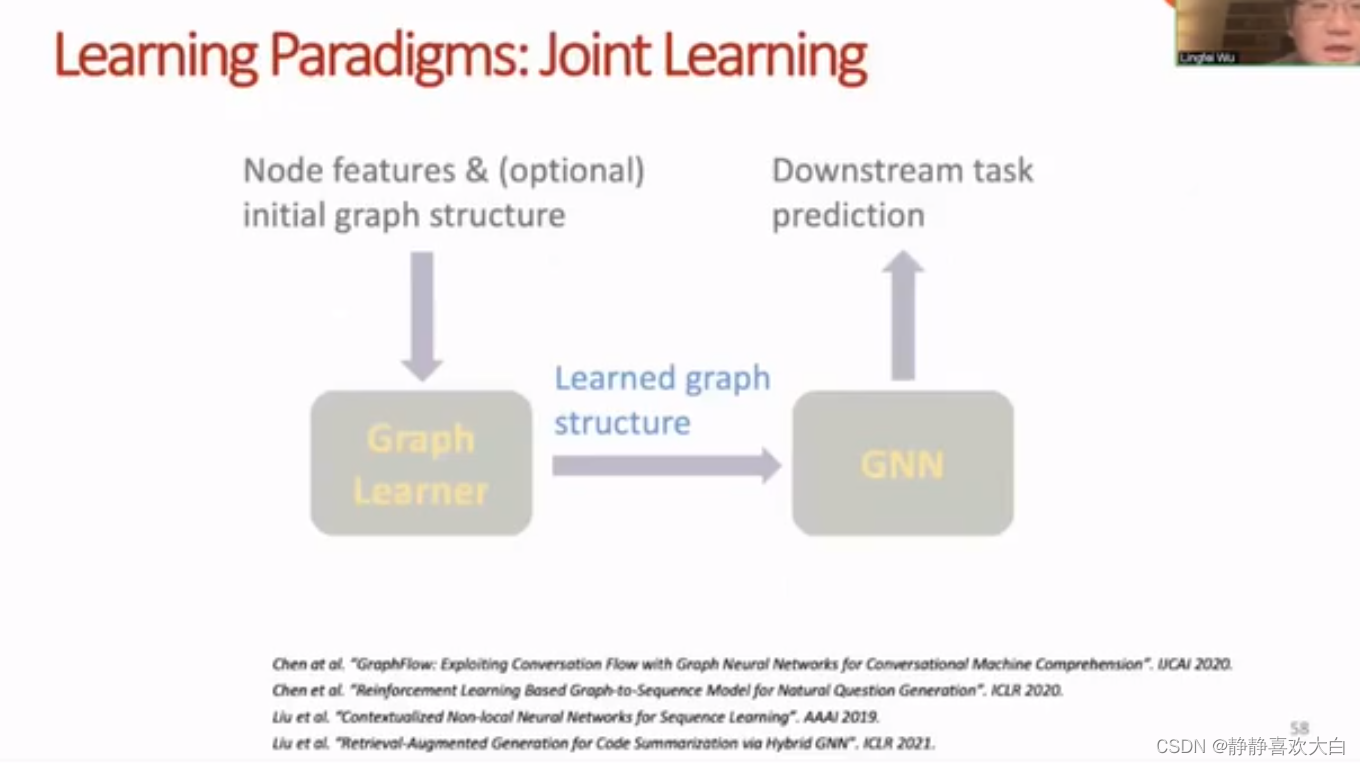



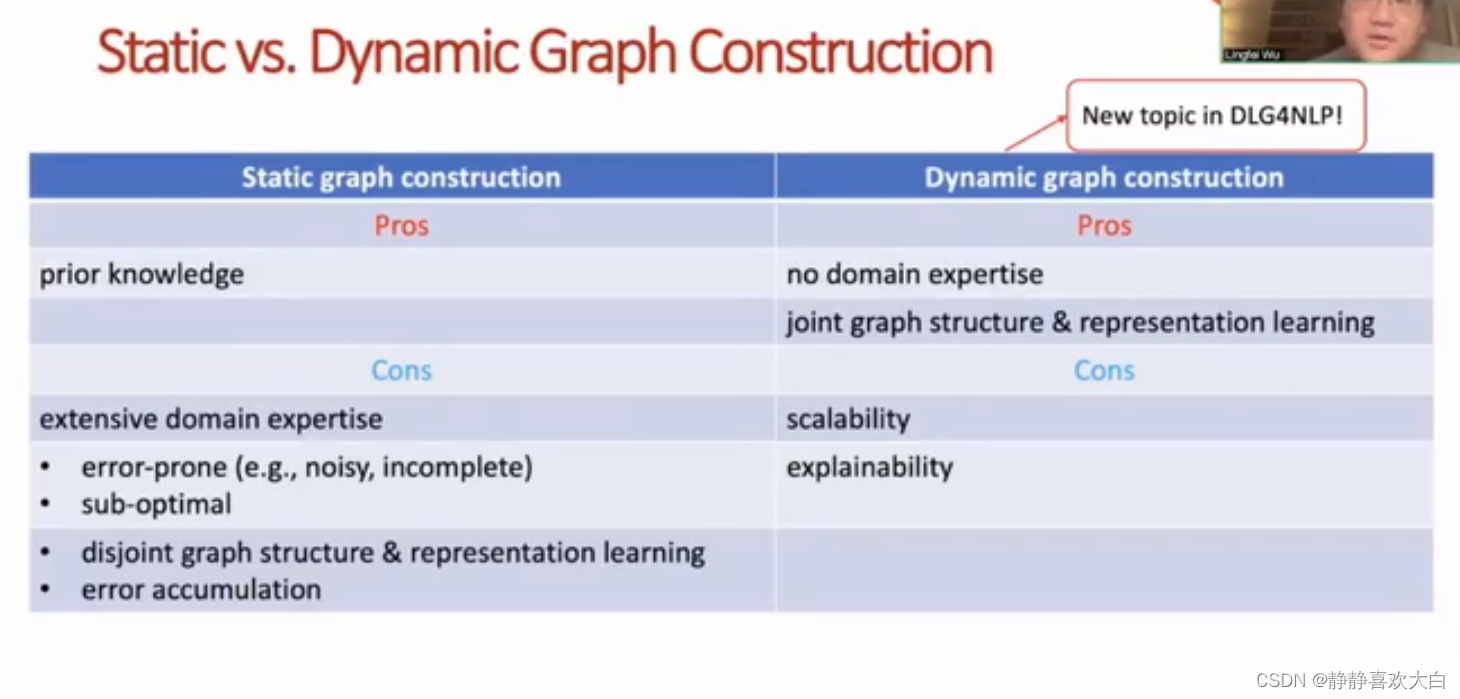

应用

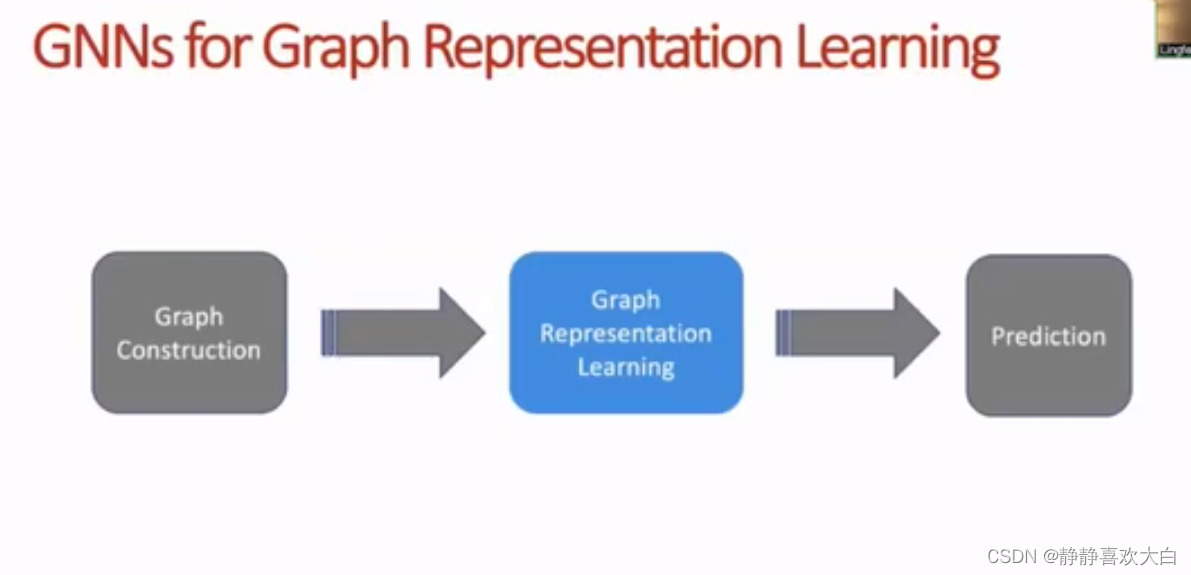











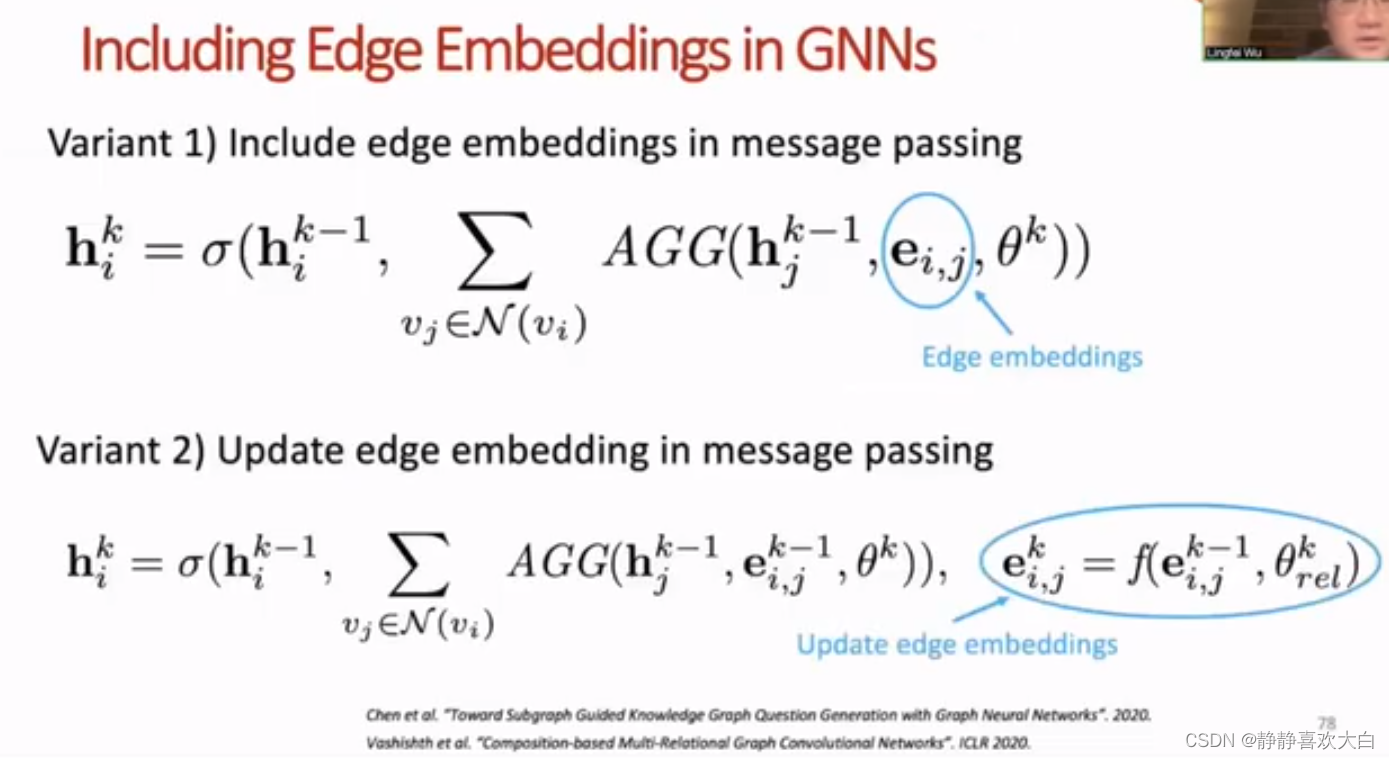


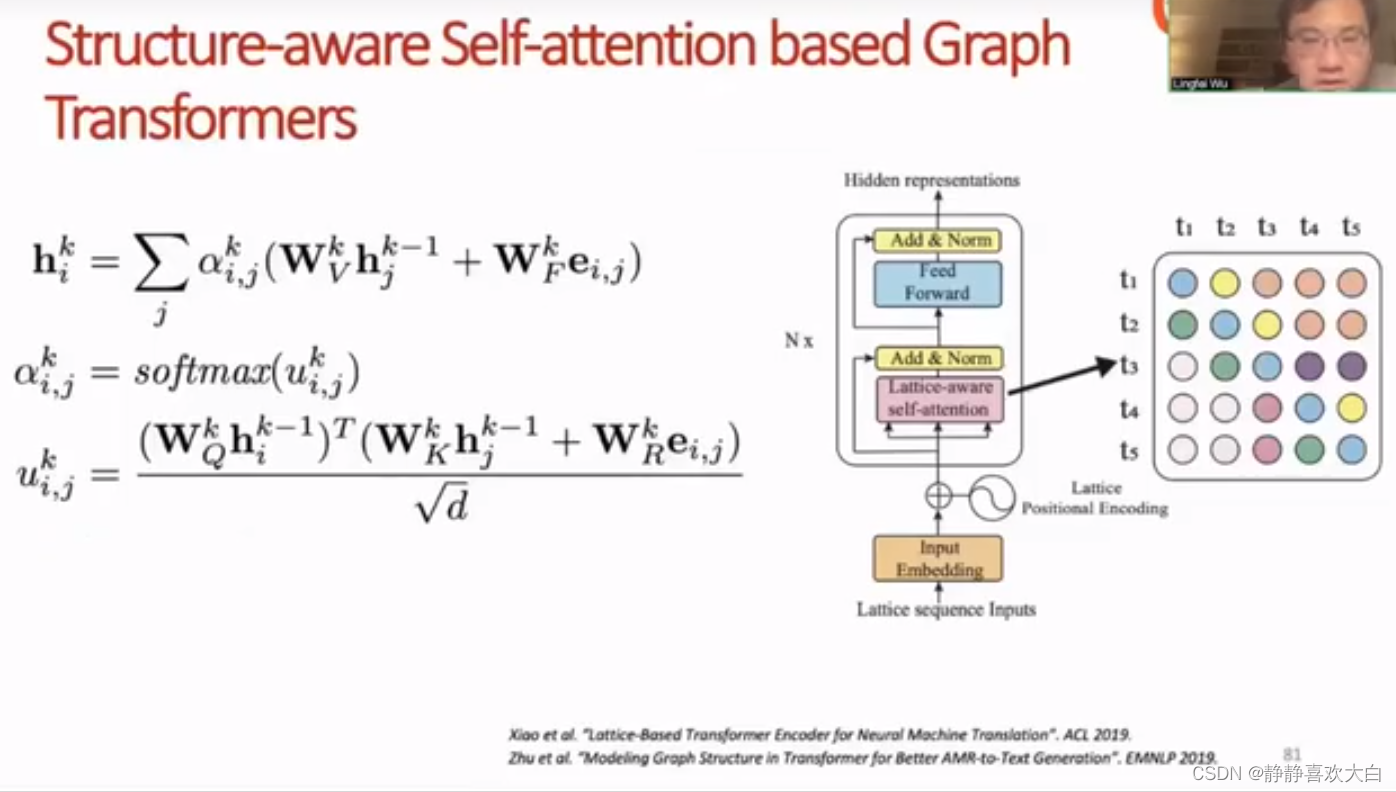

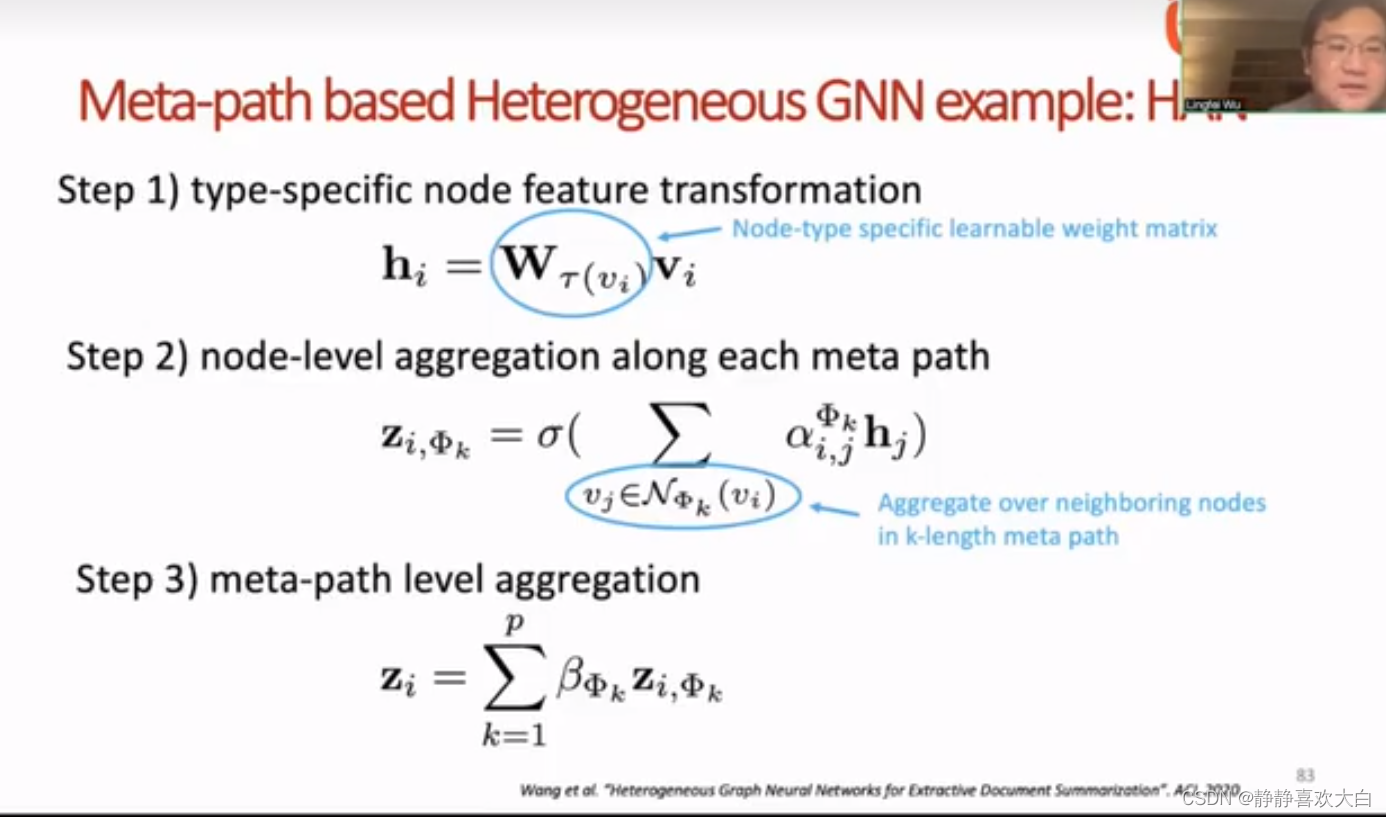
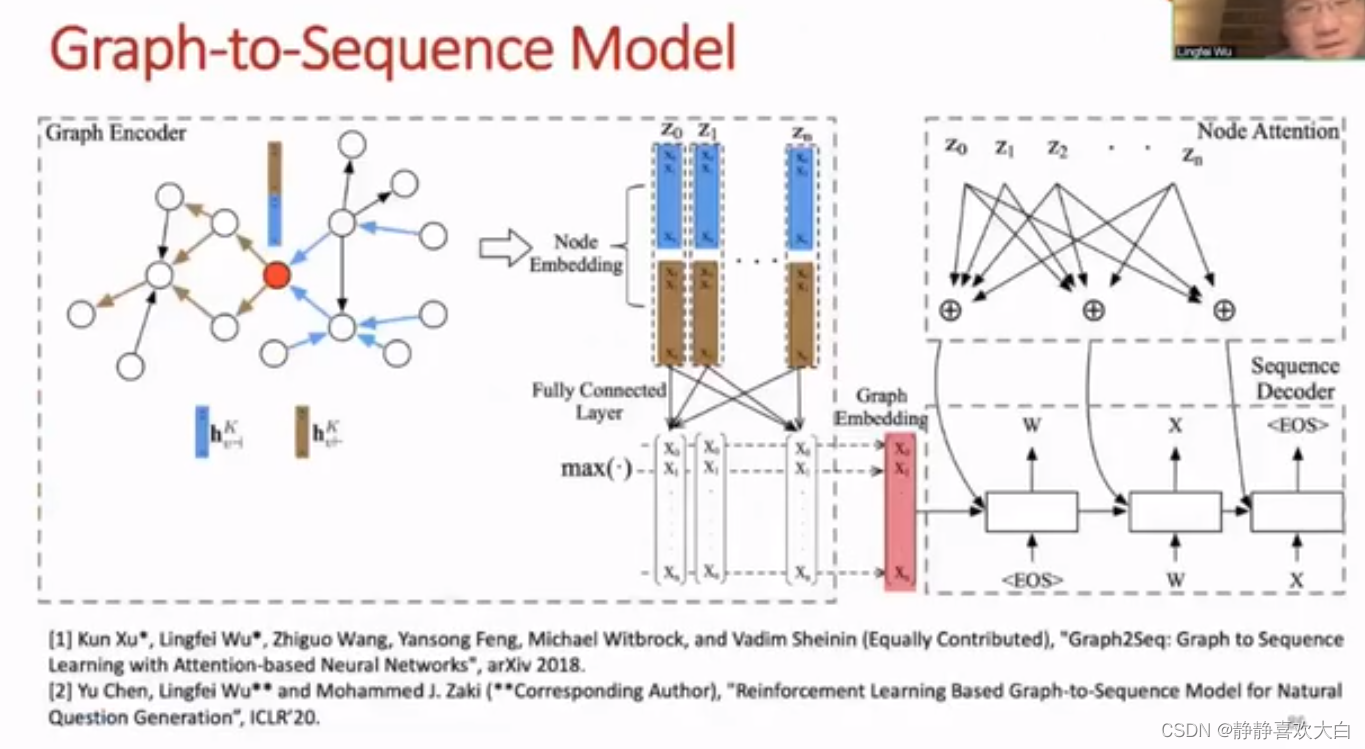

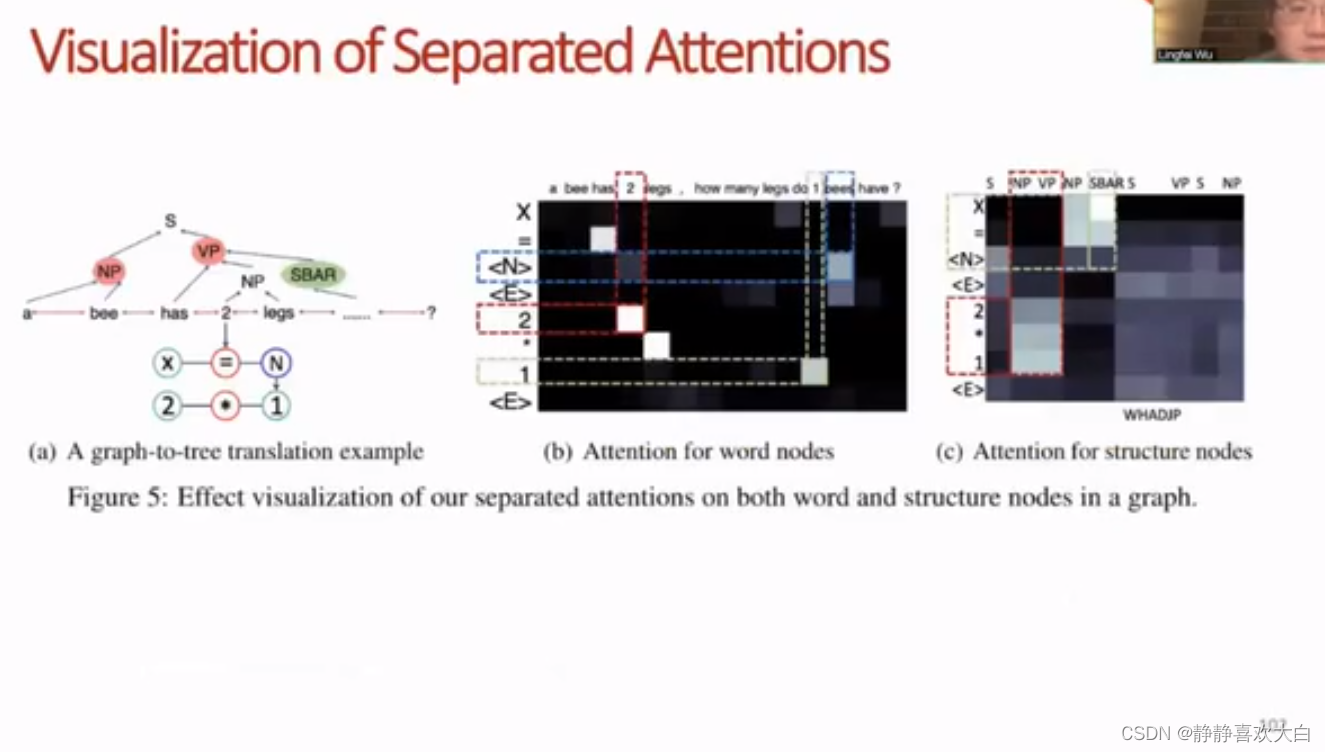















总结
1)报告模板!可以拿来借鉴使用(尤其引言基础介绍部分可以全部拿来用)
2)画图:轴线图,
3)公式凝练:Foundations
4)模型总结:基础部分
参考
LOGS图学习研讨会2022/11/29期||Pinterest吴凌飞: 图深度学习与自然语言处理_哔哩哔哩_bilibili
Subgraph-based expressive, efficient, and domain-independent graph learning
Abstract
While message-passing neural networks (MPNNs) are the most popular architectures for graph learning, their expressive power is inherently limited. In order to gain increased expressive power while retaining efficiency, several recent works apply MPNNs to subgraphs of the original graph. As a starting point, the talk will introduce the Equivariant Subgraph Aggregation Networks (ESAN) architecture, which is a representative framework for this class of methods. In ESAN, each graph is represented as a set of subgraphs, selected according to a predefined policy. The sets of subgraphs are then processed using an equivariant architecture designed specifically for this purpose. I will then present a recent follow-up work that revisits the symmetry group suggested in ESAN and suggests that a more precise choice can be made if we restrict our attention to a specific popular family of subgraph selection policies. We will see that using this observation, one can make a direct connection between subgraph GNNs and Invariant Graph Networks (IGNs), thus providing new insights into subgraph GNNs' expressive power and design space.
Biography
Haggai is a Senior Research Scientist at NVIDIA Research and a member of NVIDIA's TLV lab. His main field of interest is machine learning in structured domains.
In particular, he works on applying deep learning to sets, graphs, point clouds, and surfaces, usually by leveraging their symmetry structure. He completed his Ph.D. in 2019 at the Weizmann Institute of Science under the supervision of Prof. Yaron Lipman.
Haggai will be joining the Faculty of Electrical and Computer Engineering at the Technion as an Assistant Professor in 2023.
背景
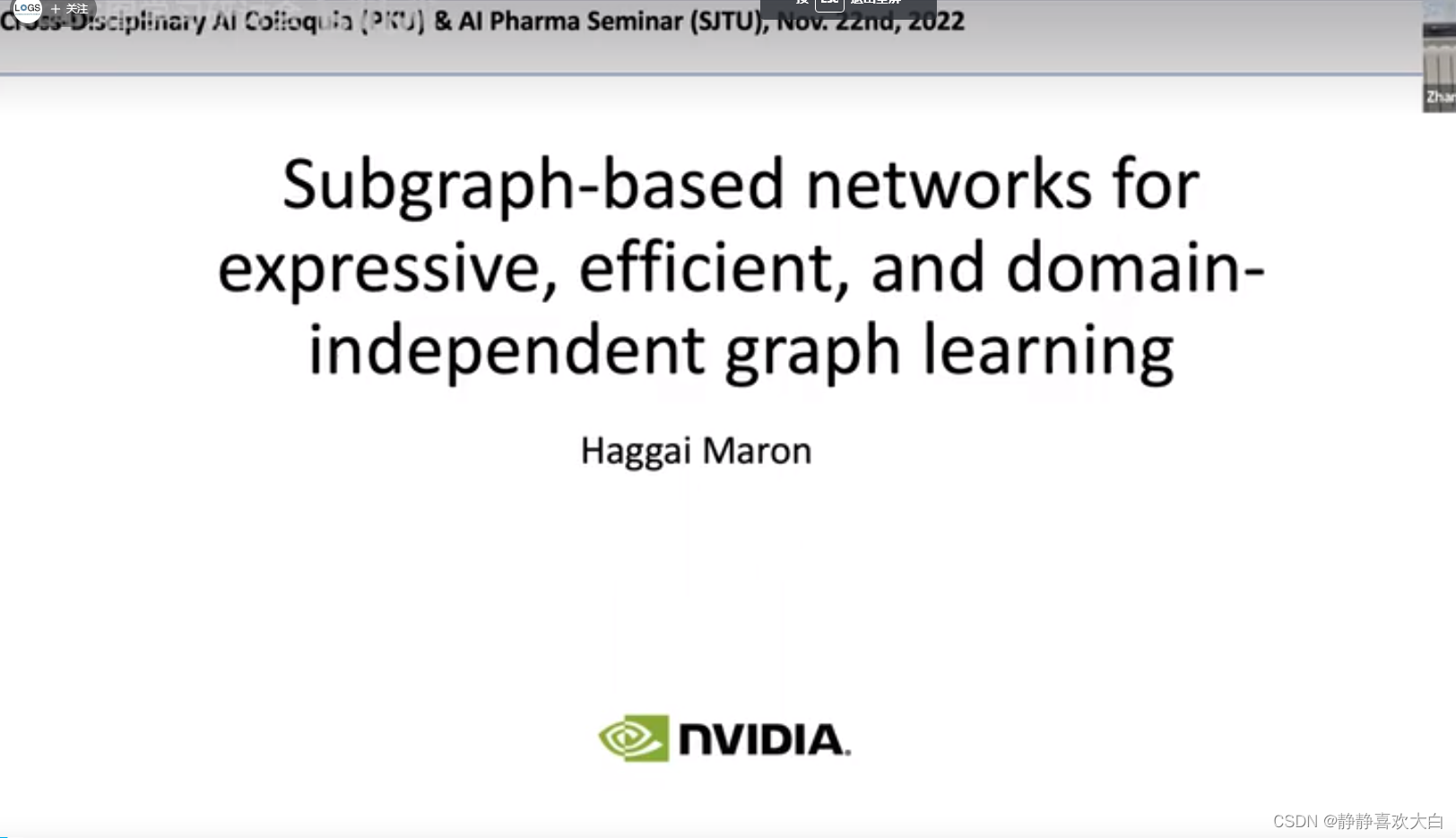

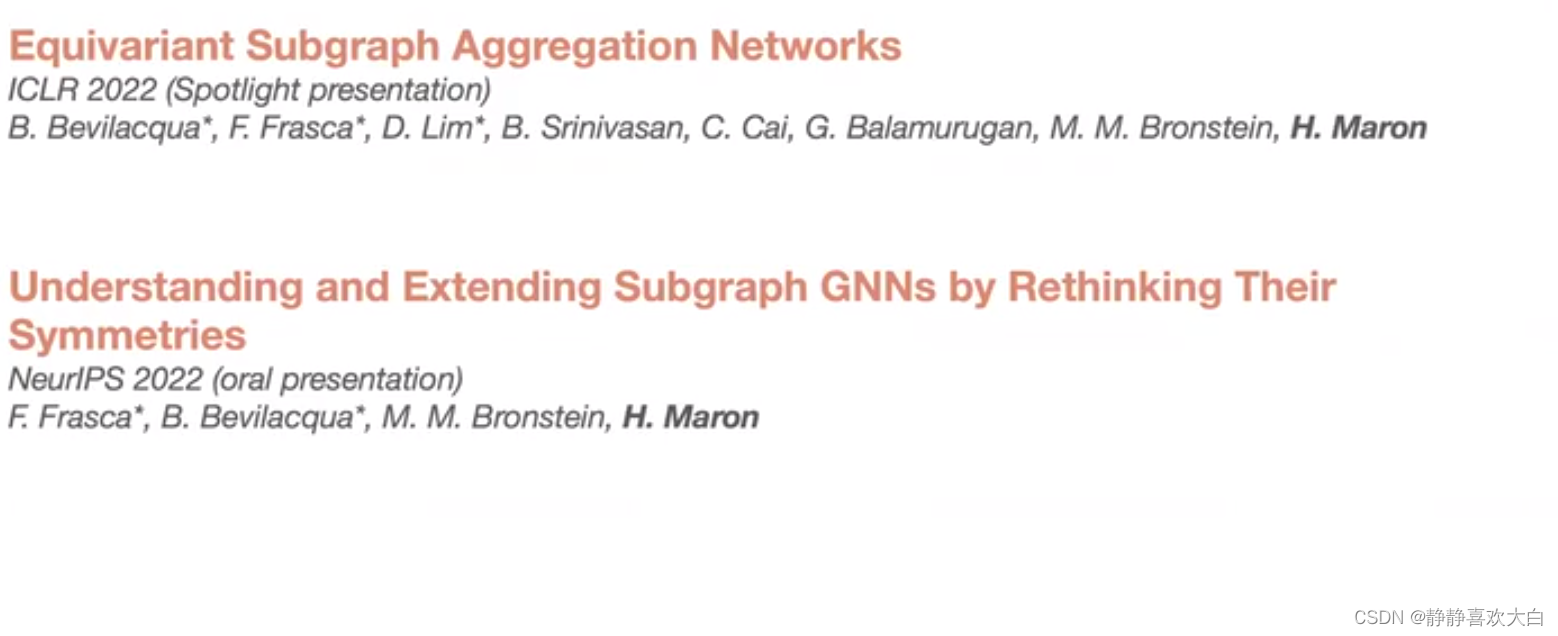

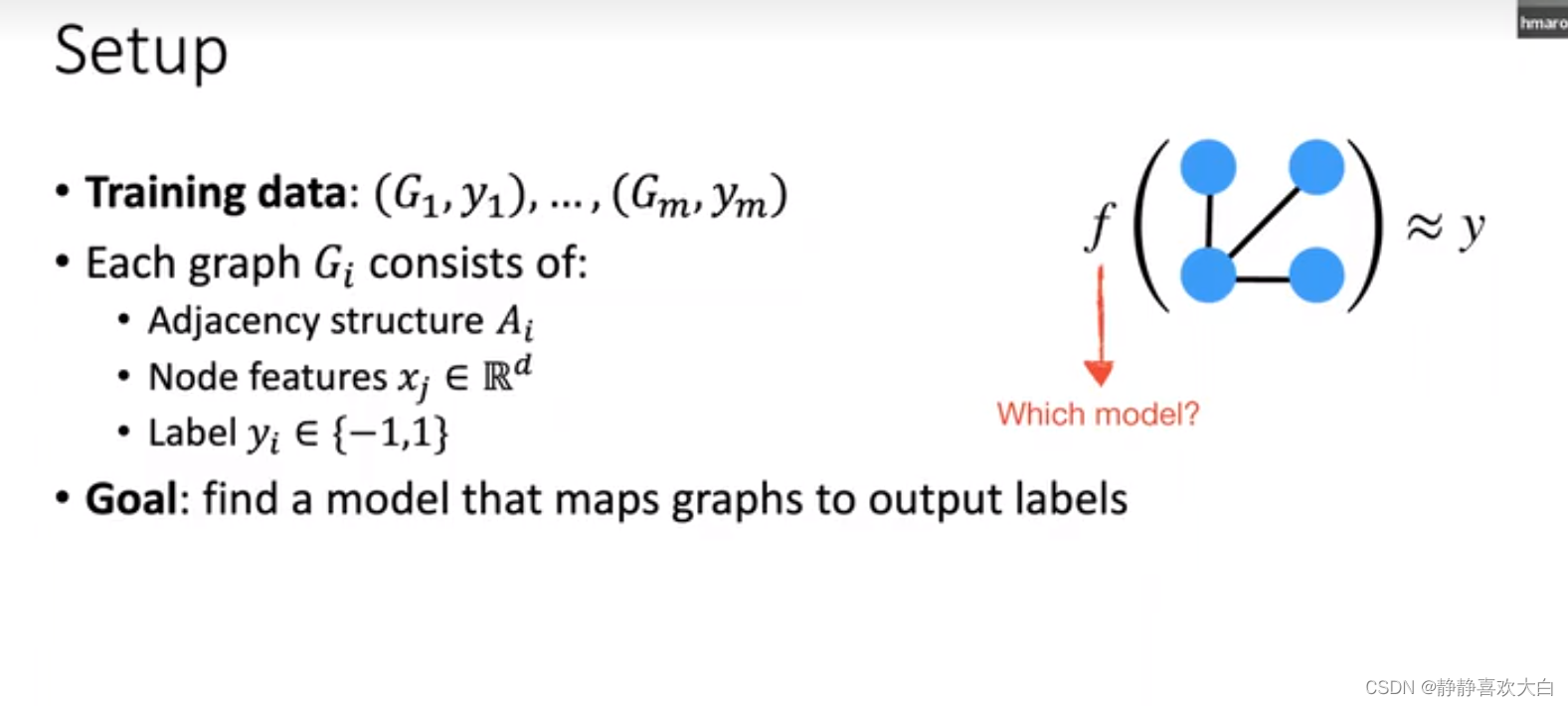

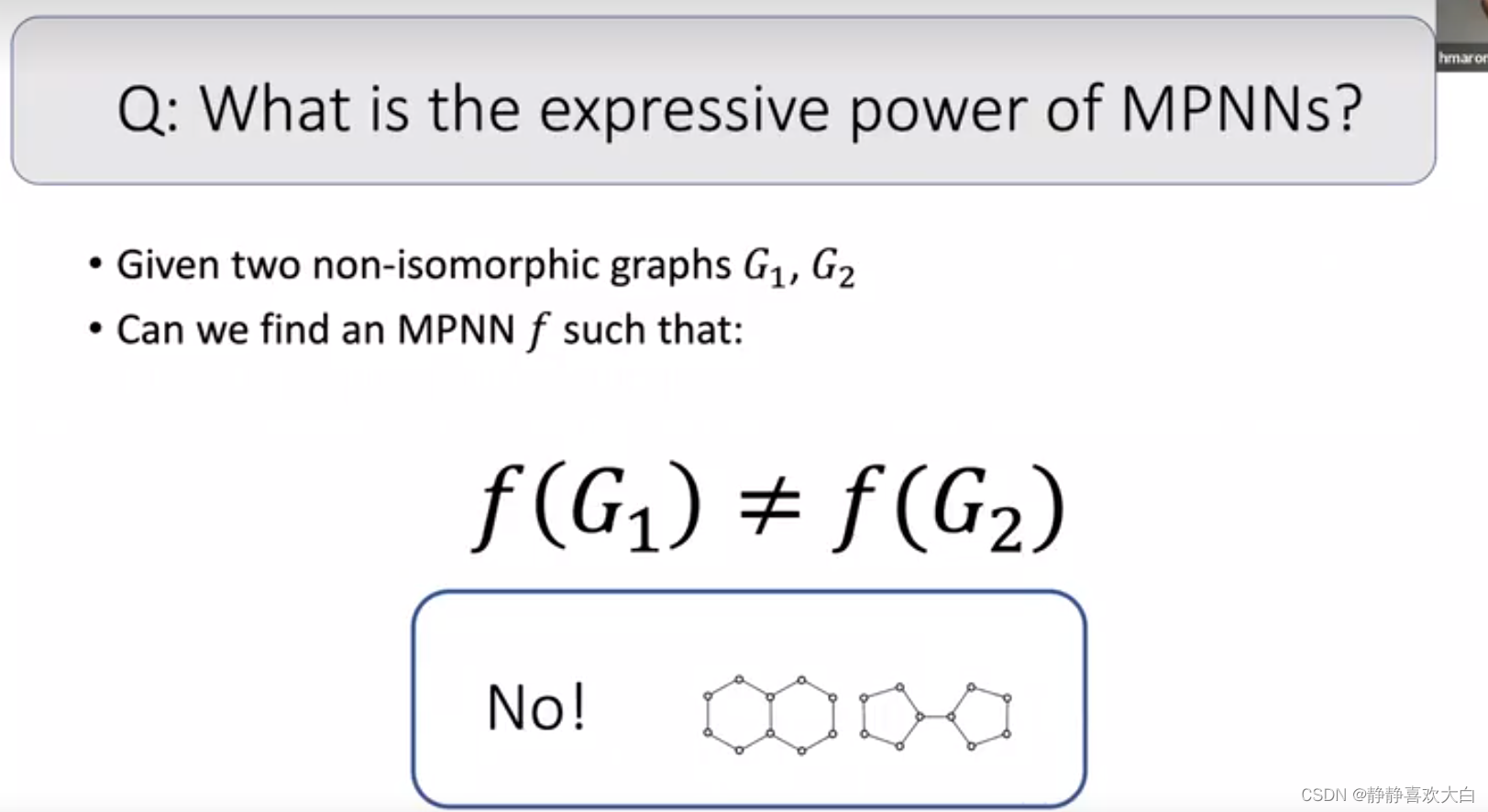






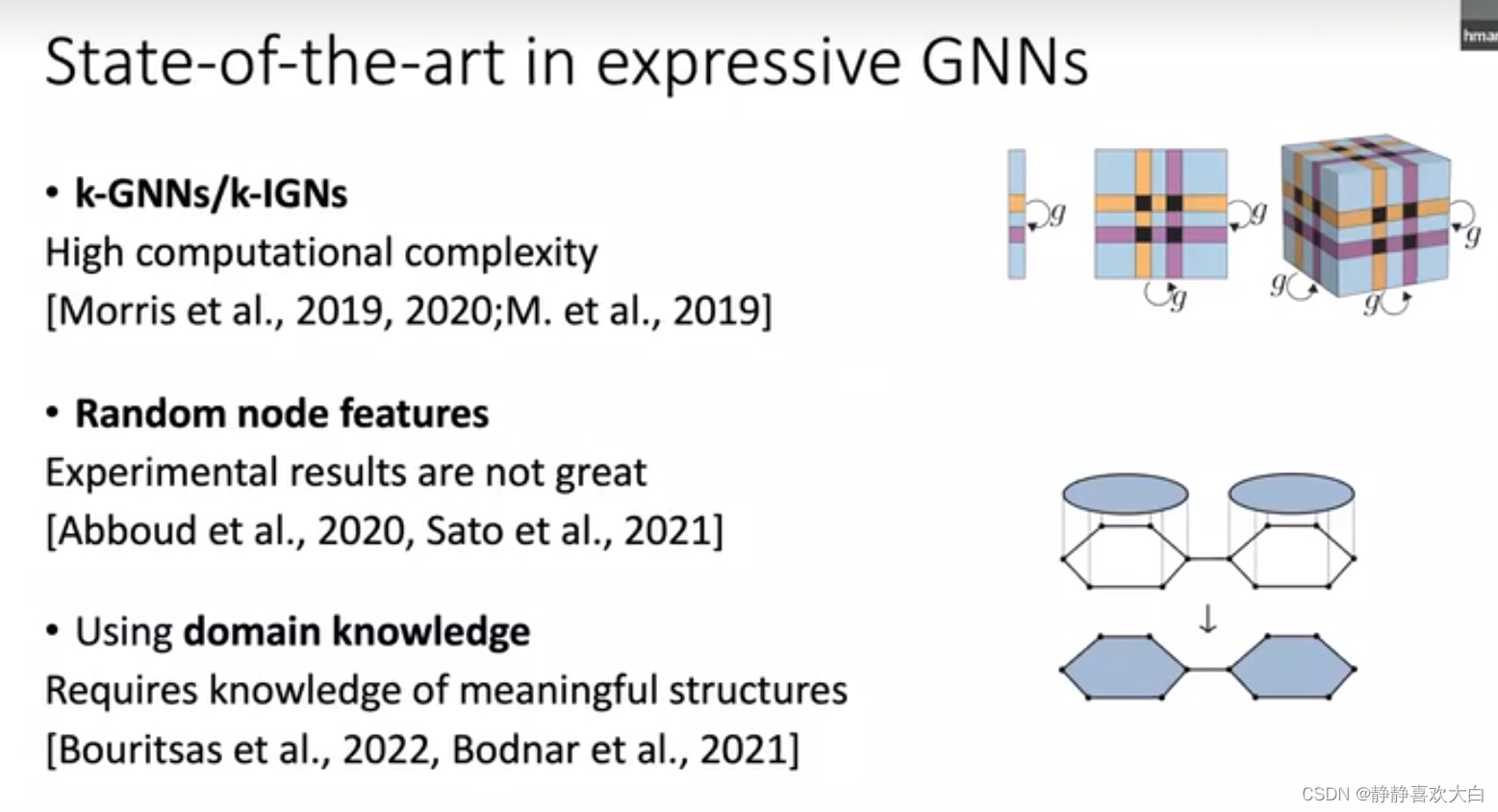

方法









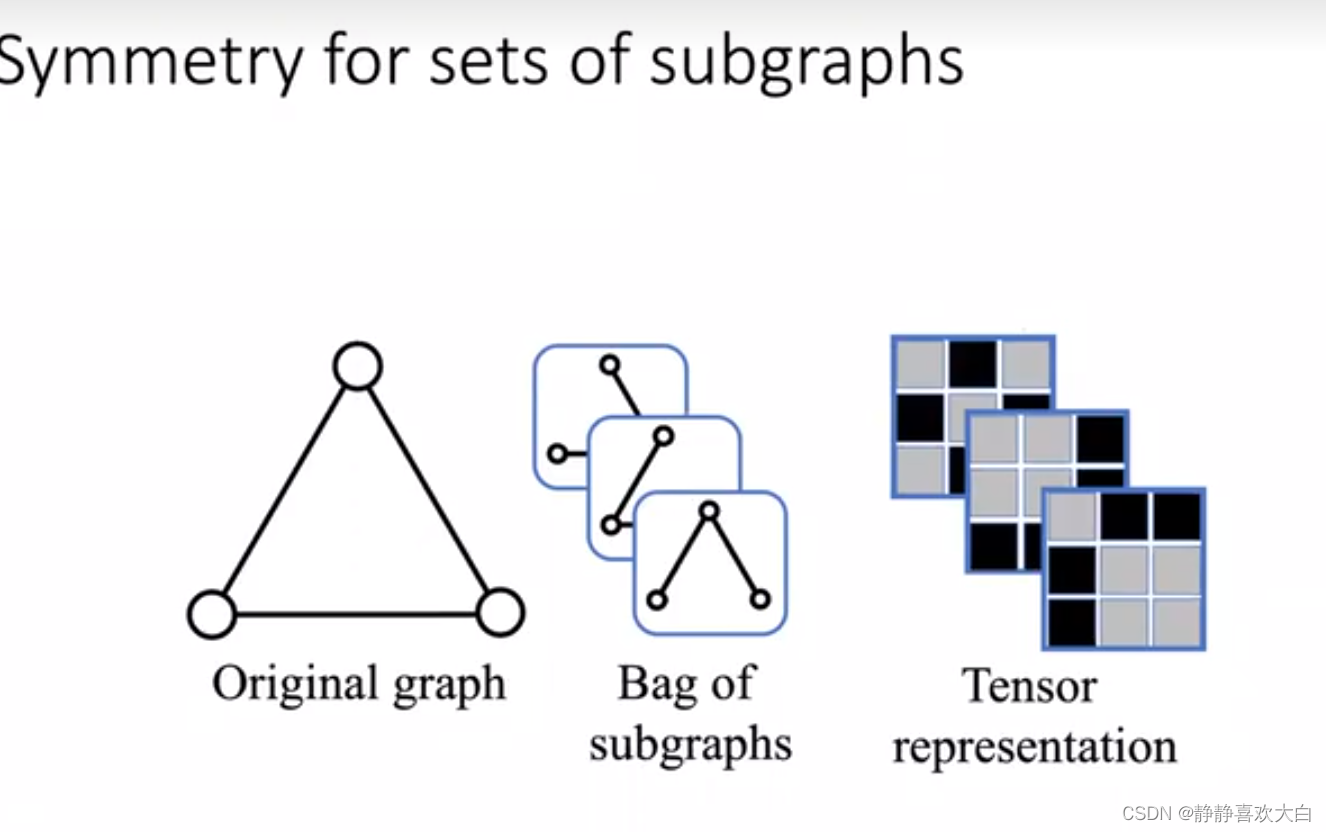


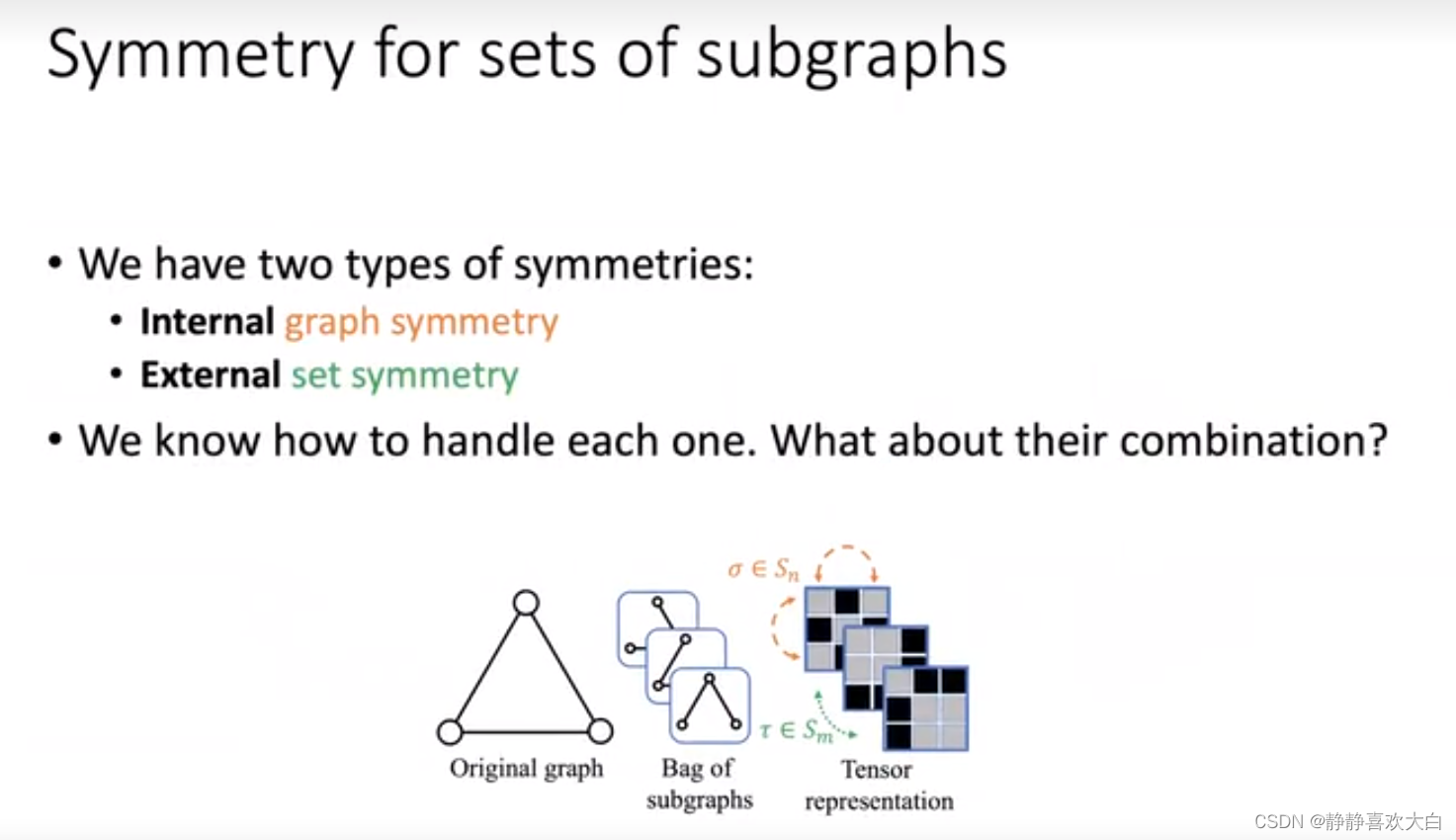
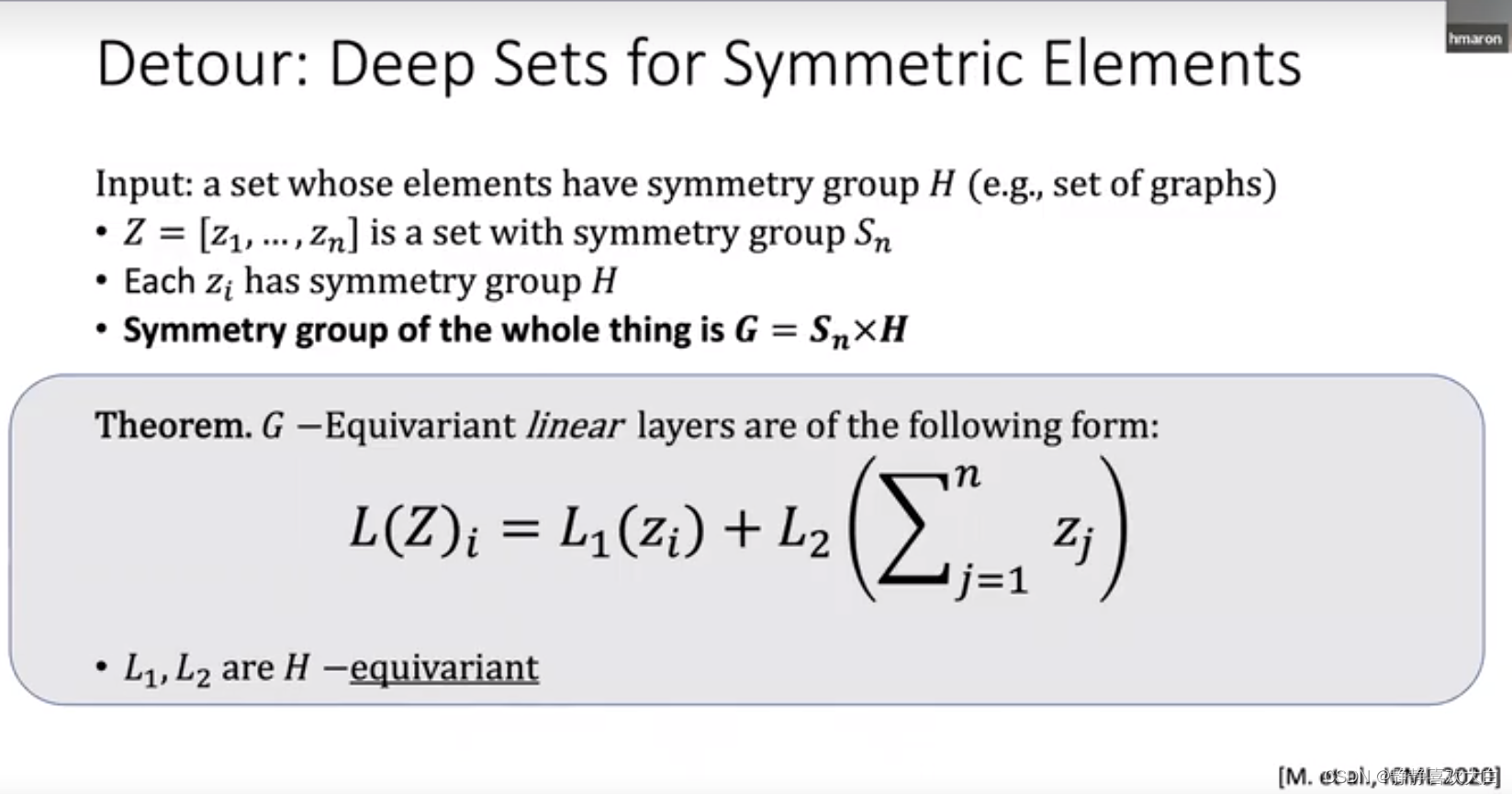


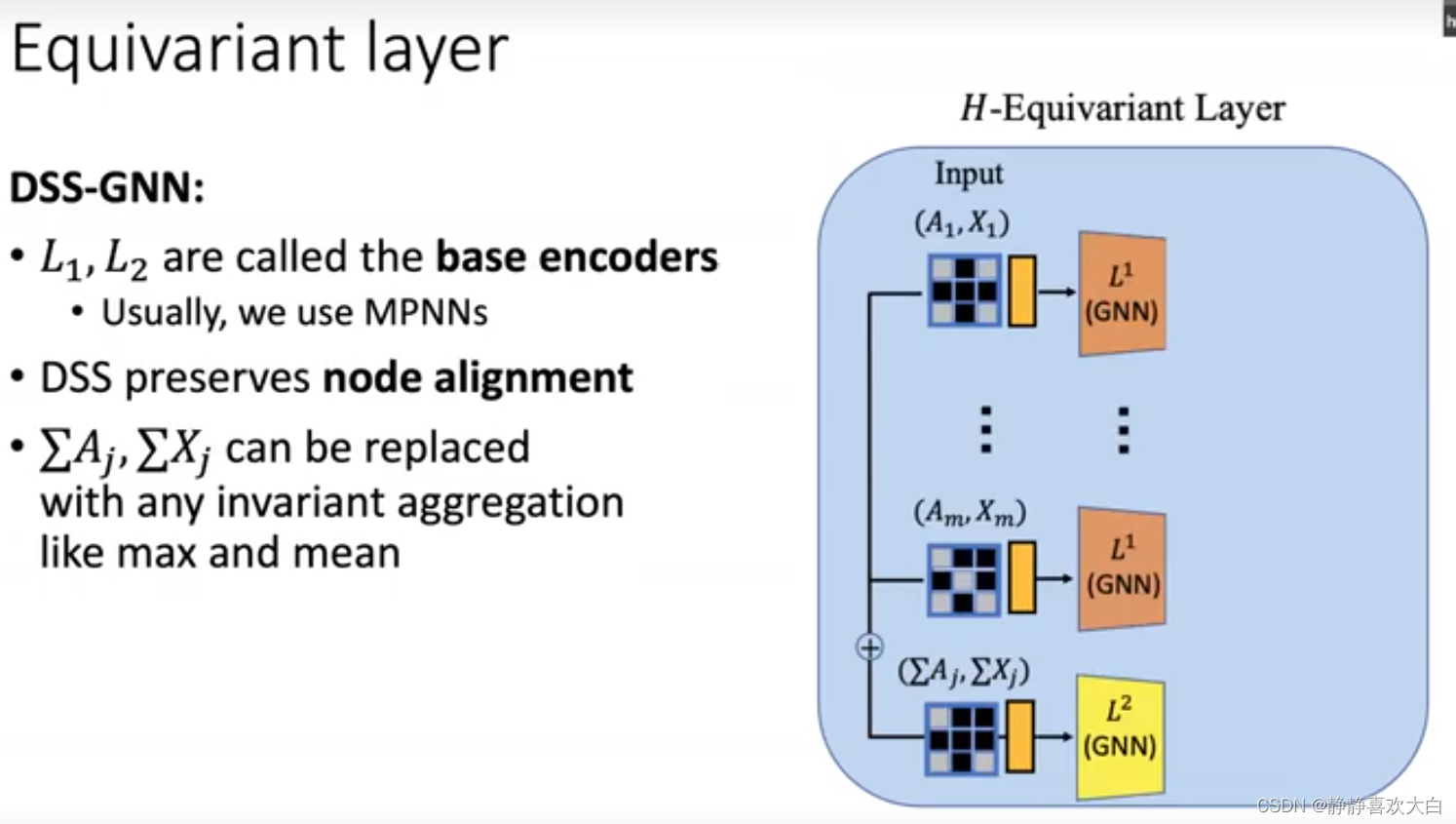




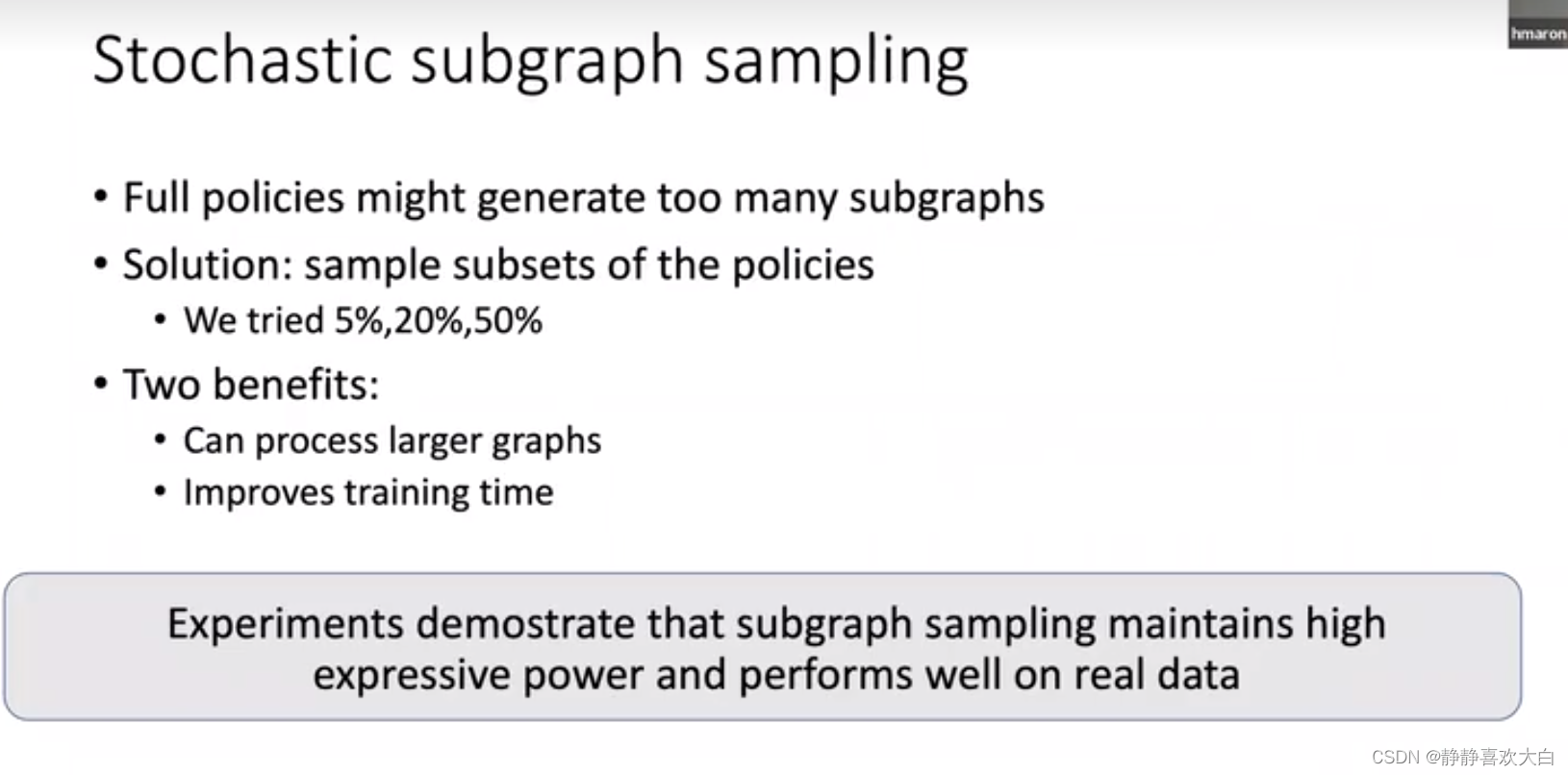








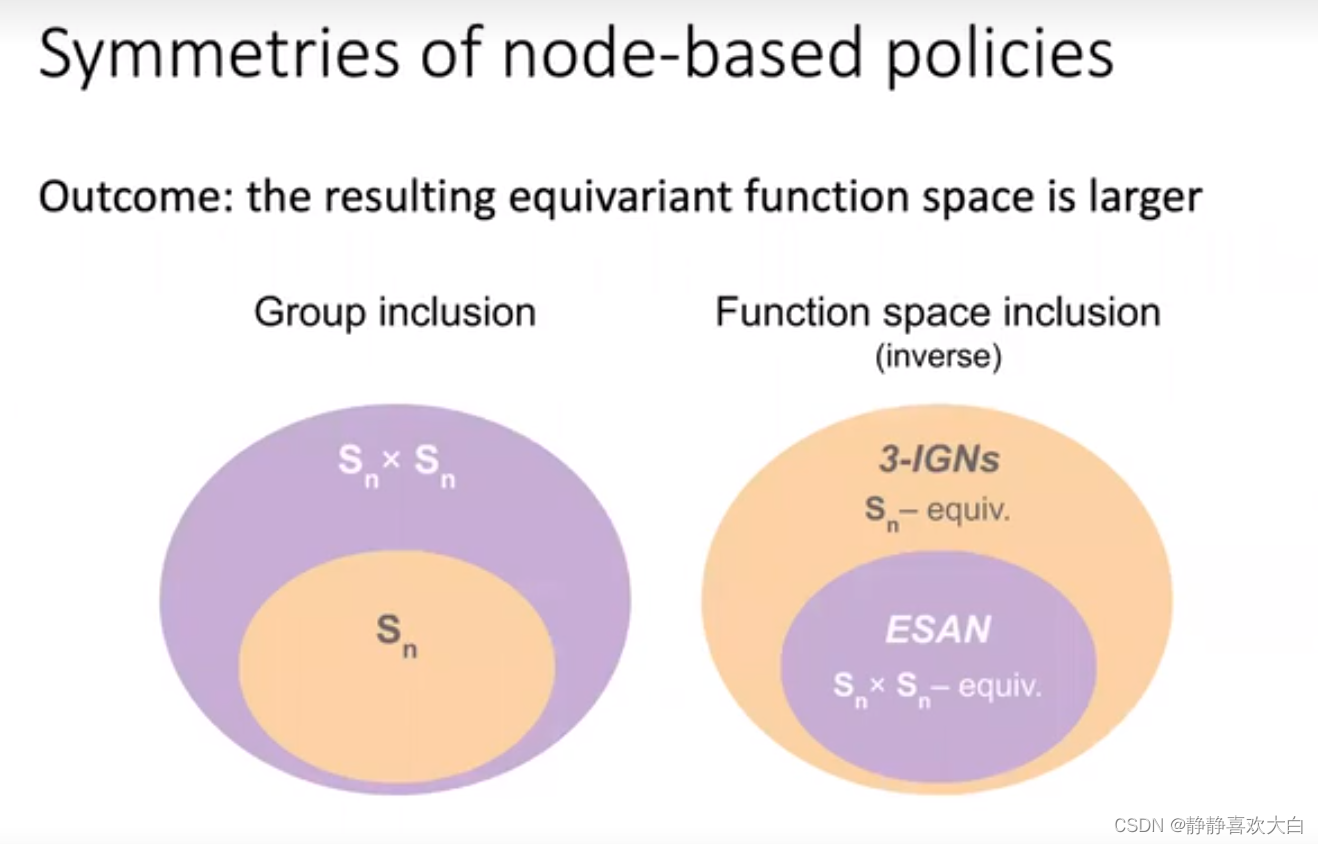



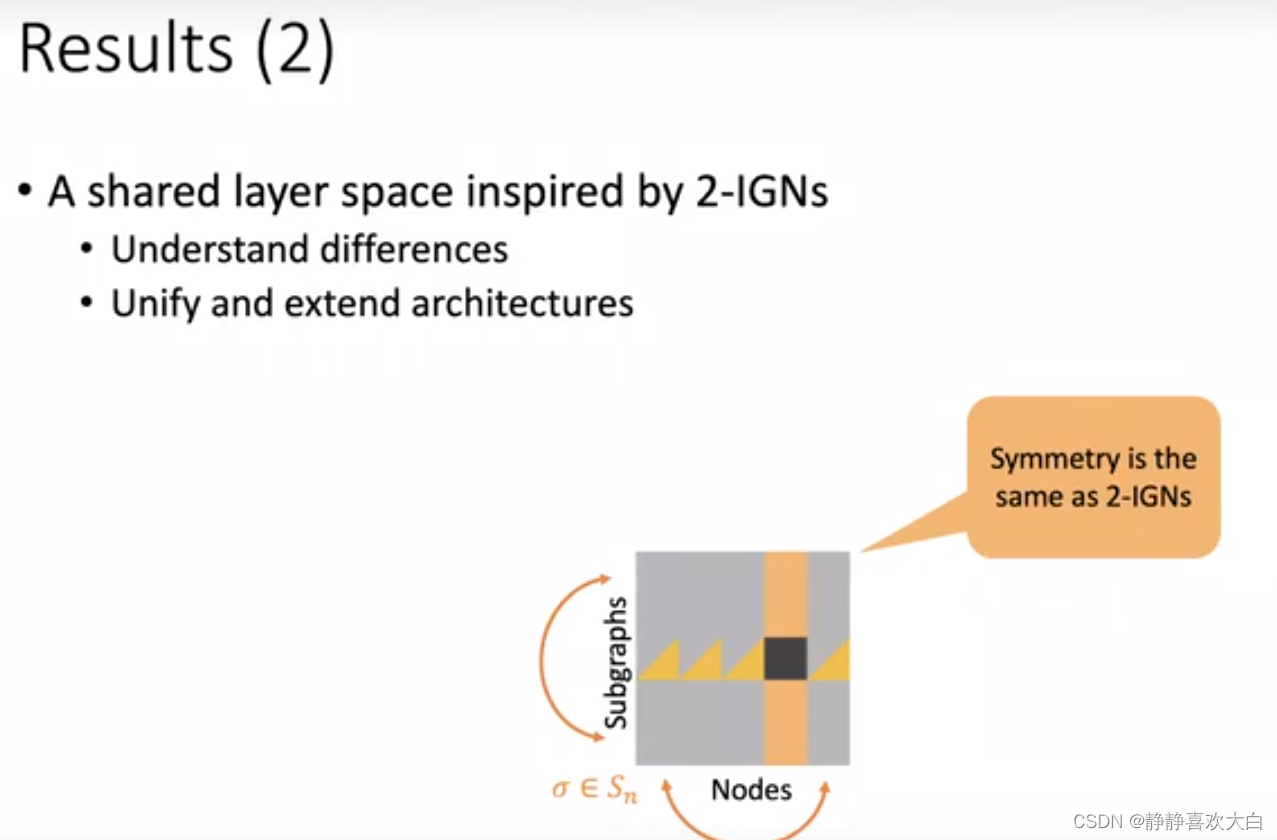




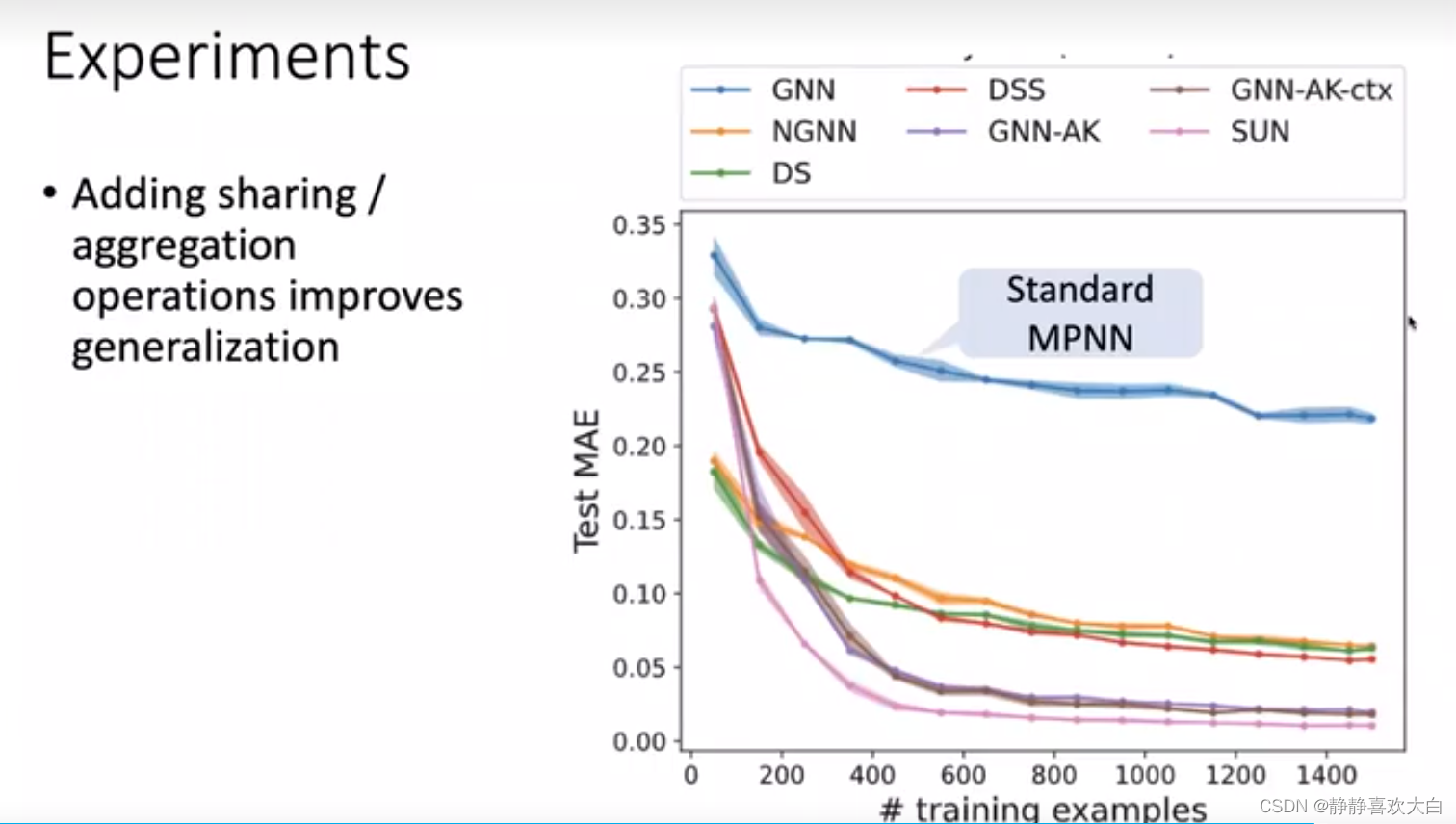
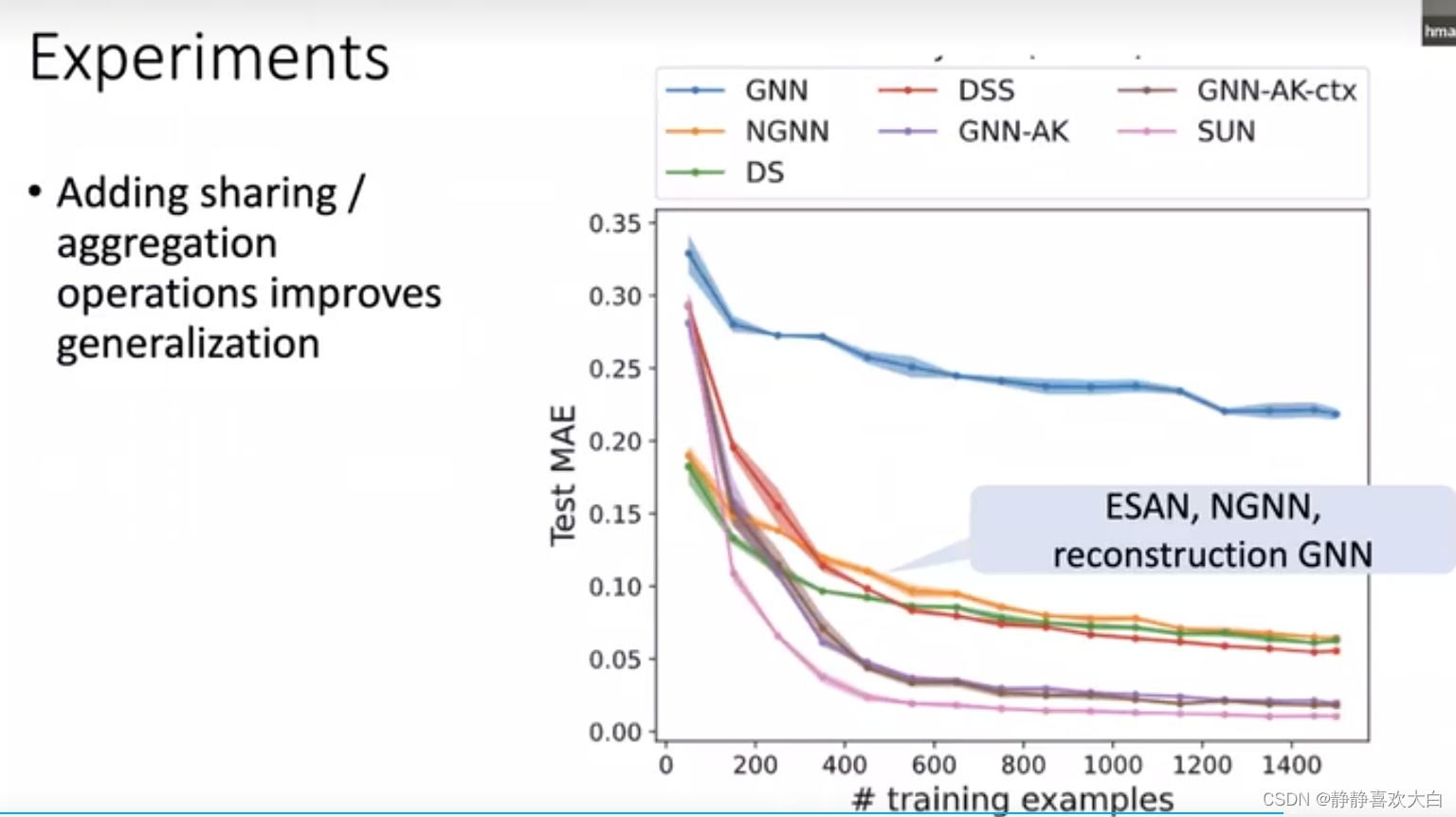

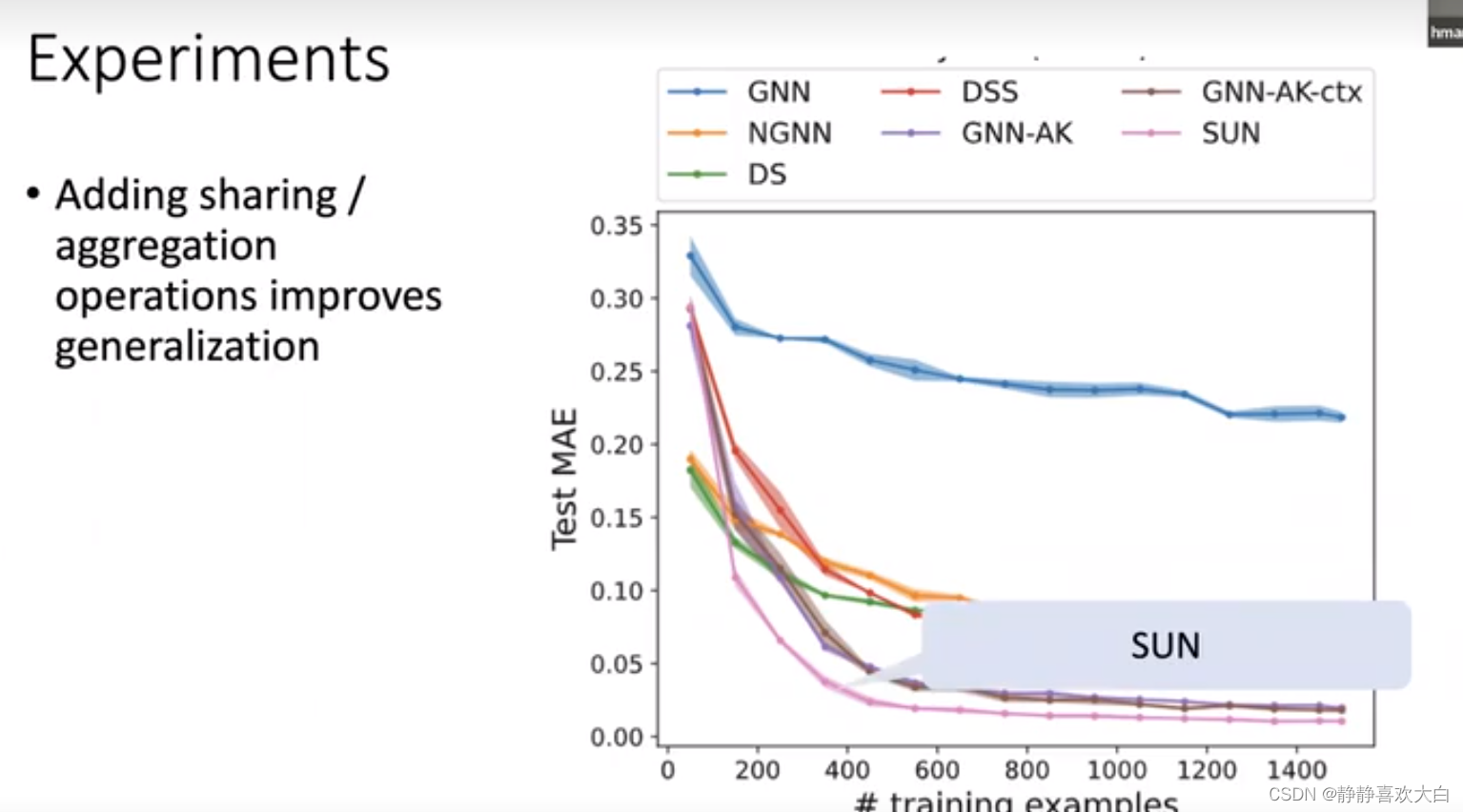



参考
Subgraph-based expressive, efficient, and domain-independent graph learning_哔哩哔哩_bilibili
